Restore your confidence — with trusted care from Rattinan Clinic.
At Rattinan Clinic, we understand that gynecomastia — the enlargement of male breast tissue — can affect not only your appearance but also your self-esteem. Whether caused by hormones, genetics, or medication, it’s a common condition, and treatment is highly effective.
Our experienced surgical team offers safe, proven solutions to restore a more masculine chest contour. You’ll receive personalized care in a certified facility — from consultation to recovery.
“Why do I, as a man, have to deal with enlarged breast tissue?”
This might be a question you’ve wondered about but felt too embarrassed to ask anyone. However, you’re not facing this problem alone. Many men around the world experience Gynecomastia or enlarged breast tissue in men, which directly impacts self-confidence—whether it’s feeling self-conscious about taking off your shirt or worrying about your body shape.
Don’t let this issue eat away at your confidence! Read on to understand the causes and proper treatment methods for Gynecomastia.
What is Gynecomastia?
Gynecomastia is Male breast enlargement – something that shouldn’t be overlooked
If you’re dealing with “pointed breasts” or “abnormal chest enlargement in men,” you might be facing a condition called Gynecomastia (gy-ne-co-mas-tia). This condition results from the abnormal growth of breast tissue in men, causing the chest to appear larger and sometimes resembling female breasts.
Have you ever felt self-conscious wearing certain t-shirts? Have you been teased about having a “chest like a woman”? Have you tried exercising and reducing chest fat, but it still won’t go away?
Gynecomastia may be more than just ordinary fat accumulation
Not every case of “enlarged breasts” comes from simple fat accumulation. Sometimes it may involve the growth of breast tissue itself, which cannot be reduced through exercise alone.
- Pseudo-Gynecomastia
Breast enlargement from fat accumulation (can be reduced through exercise or liposuction) - True Gynecomastia
Breast enlargement from abnormal breast tissue (requires surgical treatment)
If you’ve tried losing weight and exercising but your chest remains large or pointed, this problem might not be just fat!
Flat Male Chest vs. Gynecomastia Condition
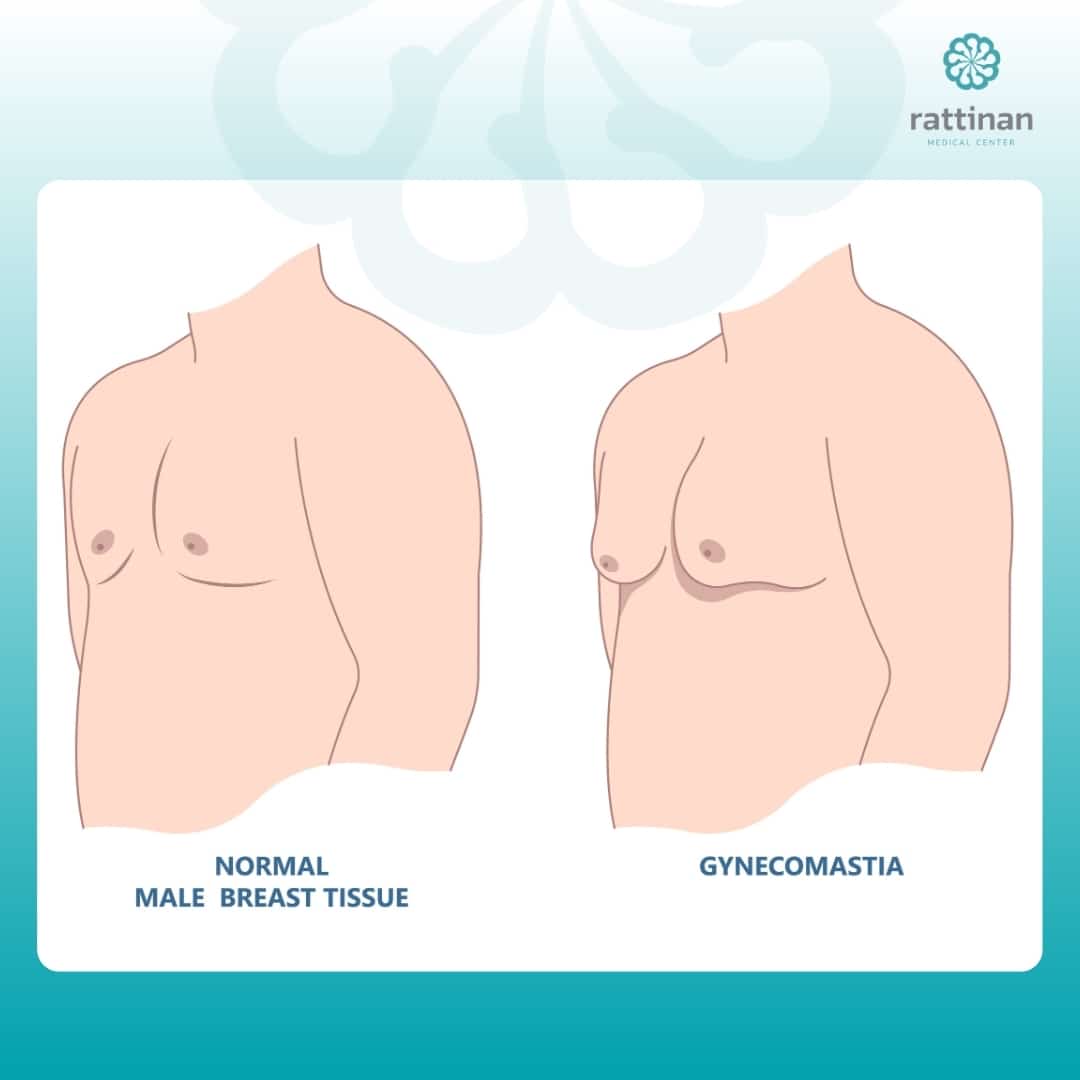
Normal Male Chest: Flat or slightly contoured, with minimal glandular and fatty tissue, mainly muscle.
Gynecomastia: Enlarged breast tissue due to hormone imbalance, giving a fuller, rounded chest shape similar to female breast tissue.
Self-check for Gynecomastia symptoms
Are you facing this problem? Self-check for Gynecomastia symptoms
Ask yourself these questions…
- Have you ever felt that your chest looks abnormally large or pointed?
- Have you ever tried to lose weight, but your chest didn’t shrink?
- Do you feel self-conscious when wearing t-shirts or taking your shirt off in front of others?
- Have you ever been teased for “having a chest like a woman”?
- Have you tried exercising and building chest muscles, but your chest still remains pointed?
If you answered “yes” to more than 2 questions, there’s a high chance you’re dealing with Gynecomastia (male breast enlargement) and should seek proper treatment.
How to self-examine for Gynecomastia
-
Observe the size and shape of your chest in the mirror
- If your chest appears pointed or larger than normal, especially around the nipple area, it may be a sign of Gynecomastia
-
Review your health history and lifestyle
- Weight has been gradually increasing, but chest appears abnormally enlarged
- Have used hormones, supplements, or medications that might affect male sex hormones
- Have hormone-related health issues, such as low testosterone levels
- If you feel firm lumps beneath the nipple, it may be True Gynecomastia (caused by breast tissue)
- If you only feel soft fat tissue, it may be Pseudo-Gynecomastia (caused by fat accumulation)
If your chest appears pointed or larger than normal, especially around the nipple area, it may be a sign of Gynecomastia
- Weight has been gradually increasing, but chest appears abnormally enlarged
- Have used hormones, supplements, or medications that might affect male sex hormones
- Have hormone-related health issues, such as low testosterone levels
Gynecomastia may not resolve on its own, and leaving it untreated could further damage your confidence.
Gynecomastia can be treated! And Rattinan Clinic offers safe treatment techniques that can effectively reduce male breast size with quick, visible results.
Grades of Gynecomastia
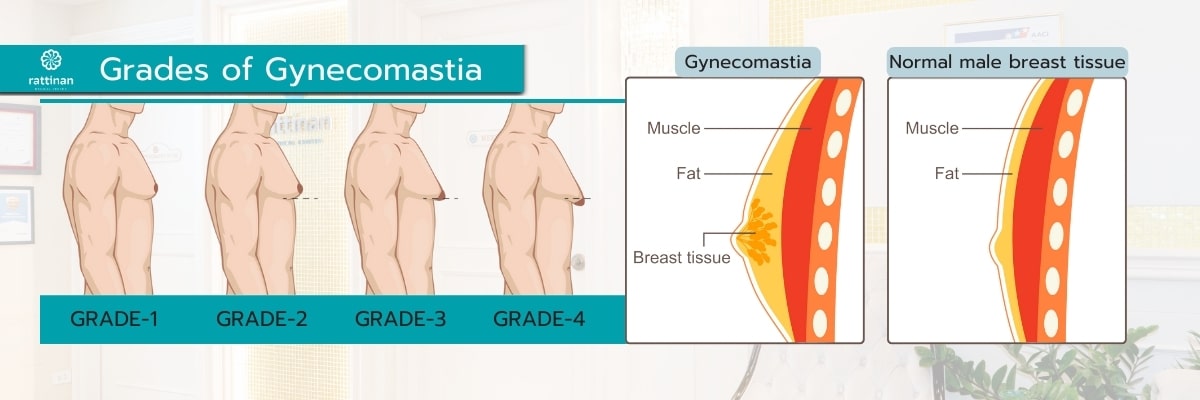
Grade 1 Gynecomastia
-
Swelling behind the nipple and areola
- Severity : Very mild
Grade 2 Gynecomastia
- Swelling across chest wall, indistinct edges
- Severity : Mild to high
Grade 3 Gynecomastia
- More prominent swelling, definite edge
- Severity : High and visible
Grade 4 Gynecomastia
- Sagging of breast (Feminization)
- Severity : Severe and visibly feminine
What causes Gynecomastia?
Why do some men develop abnormal breast enlargement?
Gynecomastia or enlarged breast tissue in men typically results from an imbalance between male and female hormones, but there are other contributing factors.
Let’s examine the main causes of Gynecomastia
Hormonal Imbalance – The Primary Cause of Male Breast Enlargement
Normally, men’s bodies have higher levels of androgens (Testosterone) compared to estrogen, which is a female hormone. However, when abnormalities occur—such as decreased testosterone or increased estrogen—the body begins developing breast tissue, causing the chest to appear larger than normal.
At-risk groups for hormonal imbalances:
- Adolescents with unstable hormones – commonly seen between ages 12-18, and some cases may improve with age
- Older men – after age 40+, testosterone levels decline, making this condition more likely
- People with hormone-related disorders – such as low testosterone, thyroid abnormalities, or liver disease
Gynecomastia in Teenagers
Breast tissue growth happens in men (men boobs) during three stages in the life span of an individual and they are infancy, adolescence and old age.
When teenagers go through puberty and becomes sexually mature, there are a lot of hormonal changes including estrogen dominance for some time and this can cause development of breast tissue.
Not all boys going through puberty will experience this but estimated 50% may develop breast tissue growth.
This called pubertal or teenage gynecomastia.
Gynecomastia in Adults
Men who are significantly overweight are very likely to feel some enlargement of their breast tissue.
This is partly caused by fat tissue under the skin on the chest wall, and partly by true breast glandular tissue.
Fat tissue anywhere in the body encourages formation of estrogen, and thus can lead to gynecomastia.
Certain medications and substances can stimulate increased estrogen or decreased testosterone, making Gynecomastia more likely to develop.
Medications that may cause breast enlargement:
- Anabolic steroids – particularly common among bodybuilders using them to increase muscle mass, but they cause male hormones to convert to female hormones
- High blood pressure or heart disease medications – such as Spironolactone, which may stimulate estrogen
- Depression and anxiety medications – such as Diazepam or SSRIs
- Prostate cancer treatments – that directly reduce male hormones
If you’re taking these medications and notice abnormal chest enlargement, consult a doctor immediately.
While most Gynecomastia cases stem from hormonal issues, some people may have this problem due to genetics or endocrine-related diseases.
Diseases and conditions that may cause Gynecomastia:
- Klinefelter Syndrome – a genetic condition causing men to have extra X chromosomes, resulting in abnormally high estrogen levels
- Liver or kidney disease – the liver and kidneys play roles in hormone regulation; dysfunction can cause hormonal imbalances
- Abnormal thyroid hormone (Hyperthyroidism) – causes the body to produce excessive estrogen
Is ‘fat equals bigger breasts’ true?
Many people think Gynecomastia is caused solely by fat accumulation, but in overweight men, the body may actually convert more male hormones to estrogen, resulting in larger breast appearance.
How to distinguish between Gynecomastia and regular fat:
- Gynecomastia (True Gynecomastia) – chest has firm lumps beneath the nipples that don’t disappear even with weight loss
- Pseudo-Gynecomastia – chest enlargement from pure fat that can be reduced through exercise and diet control
If you’ve exercised and lost weight but your chest remains pointed, it may be true Gynecomastia requiring medical treatment.
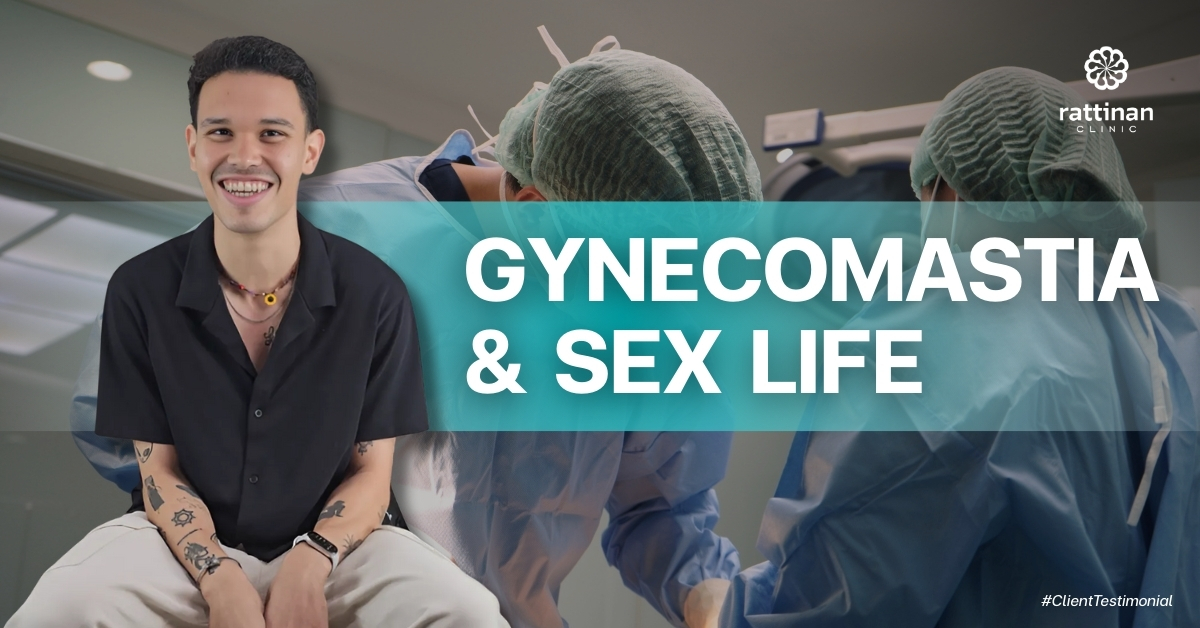
I Got Gynecomastia Surgery — Here's How It Changed My Confidence, My Body, and My Relationship
“For years, I thought I just had chest fat—but no matter how hard I trained, it never went away. I avoided taking off my shirt, even around my partner. It crushed my confidence. Then I found out I had gynecomastia—real gland tissue, not just fat. After surgery, everything changed. My chest finally looks the way I always wanted, and for the first time in years, I feel confident in my body and my relationship.”
Chad“Enlarged breasts” destroy your confidence more than you think!
You may not realize how much Gynecomastia affects your life
Many people think that “enlarged breasts” or large chest in men isn’t a big problem—just wear a shirt to cover it up. But in reality, Gynecomastia affects your mental health and confidence far more than you might expect.
- Afraid to take your shirt off when going to the beach, swimming pool, or gym—constantly looking for ways to hide
- Looking awkward in clothes – some shirts are tight enough to show nipples clearly or make your body shape look disproportionate
- Being teased and mocked – joking comments from friends can make you feel terrible and lose confidence
- Loss of identity – while not a serious health issue, it makes you feel insecure about yourself
- Trying to reduce it but it won’t go away – no matter how hard you exercise, your chest still looks pointed and not firm as desired
“Do I have to live with this forever?” The answer is No! Today, there are safe and effective solutions for this problem.

It’s not just about looking better—it’s about feeling confident in my own skin again.
“I had been training for years, but no matter how lean I got, my chest still looked soft and my abs never fully came through. I always thought I just had to live with it. After consulting with the team at Rattinan Clinic, I realized there was a safe, surgical option that could actually fix it. The experience was discreet, professional, and surprisingly smooth. Now, for the first time, I feel like my body matches the work I’ve put in.”
ThirdCan Gynecomastia really be treated?
Gynecomastia can absolutely be treated! There are several treatment options available, each with different advantages and disadvantages. Choosing the right method will help you regain your confidence as quickly as possible.
- People with Pseudo-Gynecomastia (chest enlargement from fat, not breast tissue)
- People who haven’t seriously tried losing weight yet
- Exercise can reduce fat, but cannot eliminate abnormally enlarged breast tissue
- Enlarged breast glands cannot be dissolved through exercise
- May actually make the chest appear more pointed because chest muscles develop while breast tissue remains
- Tamoxifen – used to reduce breast tissue in men with hormonal imbalances
- Aromatase inhibitors (AI) – reduce estrogen levels in the body
- Only effective in early stages (if left untreated for too long, breast tissue won’t respond to medication)
- Have side effects such as fatigue, headaches, or hormonal imbalances
- Cannot eliminate breast glands that have already enlarged
Method 3 : Treating Gynecomastia with Liposuction
- People with Pseudo-Gynecomastia (breast enlargement from fat, not breast tissue)
- People with excess fat in the chest area but no abnormal breast gland enlargement
- Breast glands cannot be removed through liposuction equipment
- If it’s True Gynecomastia, surgical removal must be combined with the procedure
Method 4: Gynecomastia Surgery
Gynecomastia surgery involves removing the abnormally enlarged breast tissue to restore the chest to its normal flat appearance.
Suitable for:
- True Gynecomastia (cases with abnormally enlarged breast glands)
- People who have tried other methods without seeing results
- People who want a permanent solution with quick, visible results
What Are the Risks?
What Are the Risks of Gynecomastia Surgery?
Gynecomastia surgery carries risks including aesthetic issues (unsatisfactory results in up to 50% of cases, asymmetry, contour irregularities, crater deformity, recurrence), healing complications (scarring, hematoma/seroma, infection, bleeding), sensation changes (temporary or permanent nipple/chest numbness), and rare serious complications (blood clots, anesthesia risks, damage to deeper structures, fat embolism).
At Rattinan Clinic, we minimize these risks through:
(1) AACI-certified operating rooms meeting international safety standards with modern equipment and sterile protocols;
(2) experienced specialized surgeons trained in advanced techniques for precise tissue removal preventing over-resection and contour defects;
(3) comprehensive pre-operative evaluation including medical screening and realistic expectation counseling to ensure proper patient selection;
(4) meticulous surgical technique using appropriate methods (liposuction, excision, or combination) tailored to your specific gynecomastia type;
(5) strict post-operative protocols including compression garments, antibiotics, careful wound monitoring, and regular follow-up appointments; and
(6) multidisciplinary aftercare with continuous support for optimal healing and early detection of any complications. While no surgery is completely risk-free, our commitment to safety standards, surgical expertise, and comprehensive care significantly reduces complication rates and ensures the best possible outcomes.
Possible Side Effect
Possible Side Effects of Gynecomastia Surgery
Gynecomastia surgery carries various side effects ranging from common aesthetic issues to rare serious complications.
Aesthetic side effects include unsatisfactory results requiring additional surgery, asymmetry in breast size/shape/position, contour irregularities (lumpiness, firmness from fat necrosis, “puffy nipples,” crater deformity below nipples from over-resection), recurrence if insufficient tissue removed, and areola thinning/depression.
Healing complications include permanent visible scars (sometimes hypertrophic or keloid), infections requiring antibiotics/hospitalization/surgery, wound separation needing additional treatment, protruding sutures requiring removal, and nipple/areola necrosis from inadequate blood supply requiring reconstruction.
Fluid and sensation issues include bleeding/hematoma requiring emergency drainage or transfusion, seroma (fluid collection needing drainage, higher risk with certain techniques), diminished or complete loss of nipple/chest sensation (temporary or permanent, almost always permanent with nipple grafts), and chronic pain/tenderness from nerves trapped in scar tissue or exaggerated temperature sensitivity.
At Rattinan Clinic, we minimize these risks through AACI-certified facilities, experienced specialized surgeons using precise techniques, comprehensive pre-operative screening, meticulous surgical execution, strict post-operative protocols with compression garments and antibiotics, and continuous follow-up care for optimal healing and early complication detection.
Surgical Procedure
Gynecomastia surgery typically involves liposuction, glandular tissue removal, or a combination of both.
The approach depends on the cause and severity.
- Liposuction removes excess fatty tissue through small incisions.
- Excision may be required if glandular tissue or excess skin is present.
- Incisions are placed discreetly, often around the areola or in the natural creases of the chest.
The goal is a flatter, firmer chest with natural proportions.
Hospital Admission
Most patients return home the same day. The procedure is outpatient and minimally invasive.
Duration of Operation
Approximately 1.5 to 3 hours, depending on the technique used.
Anaesthetic
Performed under general anesthesia or local anesthesia with sedation, depending on the case.
Recovery Time
2 to 3 weeks for most daily activities
Many patients return to light work or normal routines within this period.
However, full recovery—including adaptation to the new eating habits and physical activity—continues over several months with ongoing medical support.
Pre-Operative Care
Before surgery, you’ll have a full medical evaluation to confirm the diagnosis and plan the best approach. We’ll review your health history, adjust any necessary medications, and provide step-by-step preparation guidelines. Our goal is to make sure you feel informed, comfortable, and ready.
While gynecomastia isn’t usually harmful, it can affect self-esteem. Breast reduction surgery can help create a flatter, more natural chest, boosting confidence and comfort. The procedure is typically done as an outpatient under general or local anesthesia.
Investigations May Include:
- Physical exam
- Blood tests
- Breast ultrasound
- MRI (if needed)
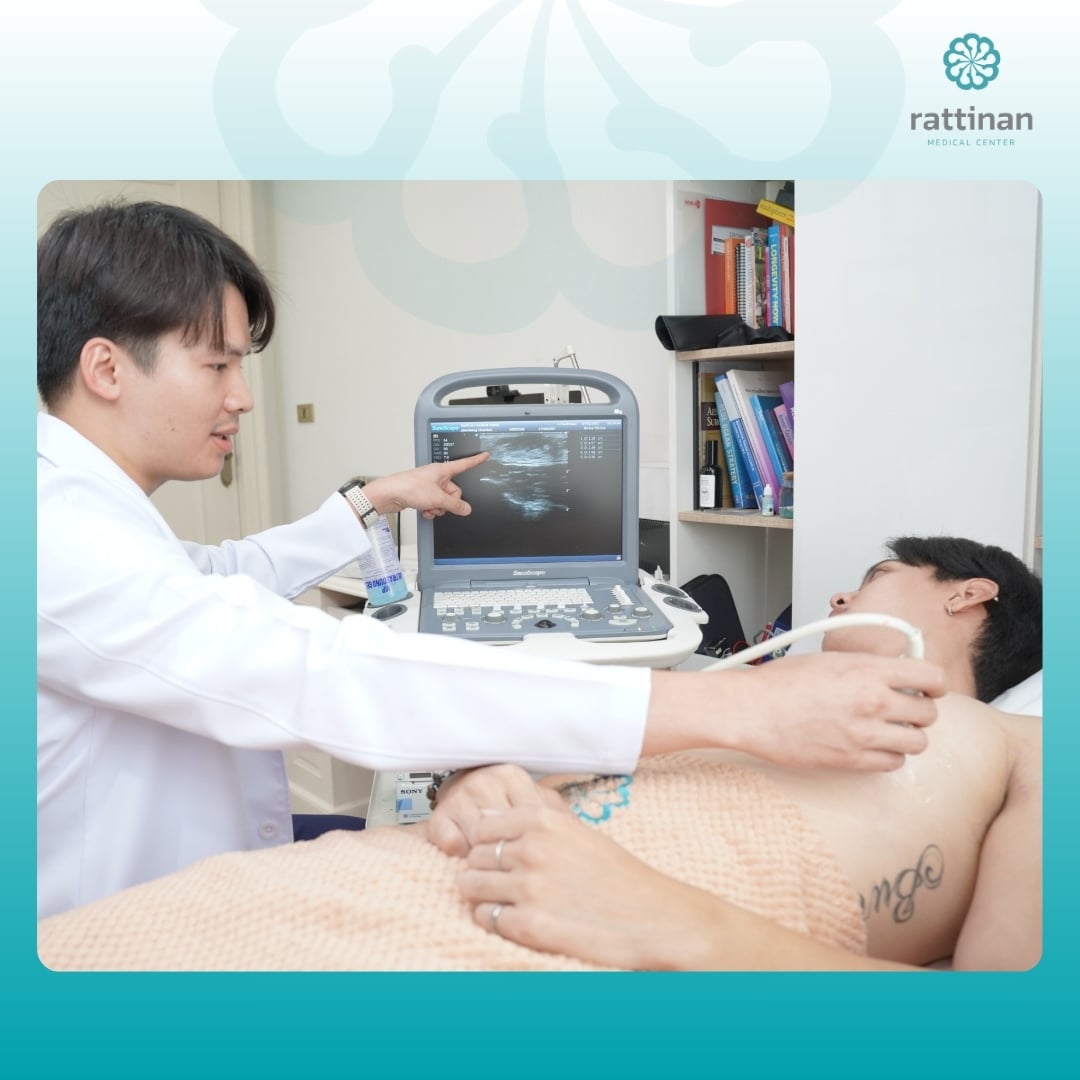
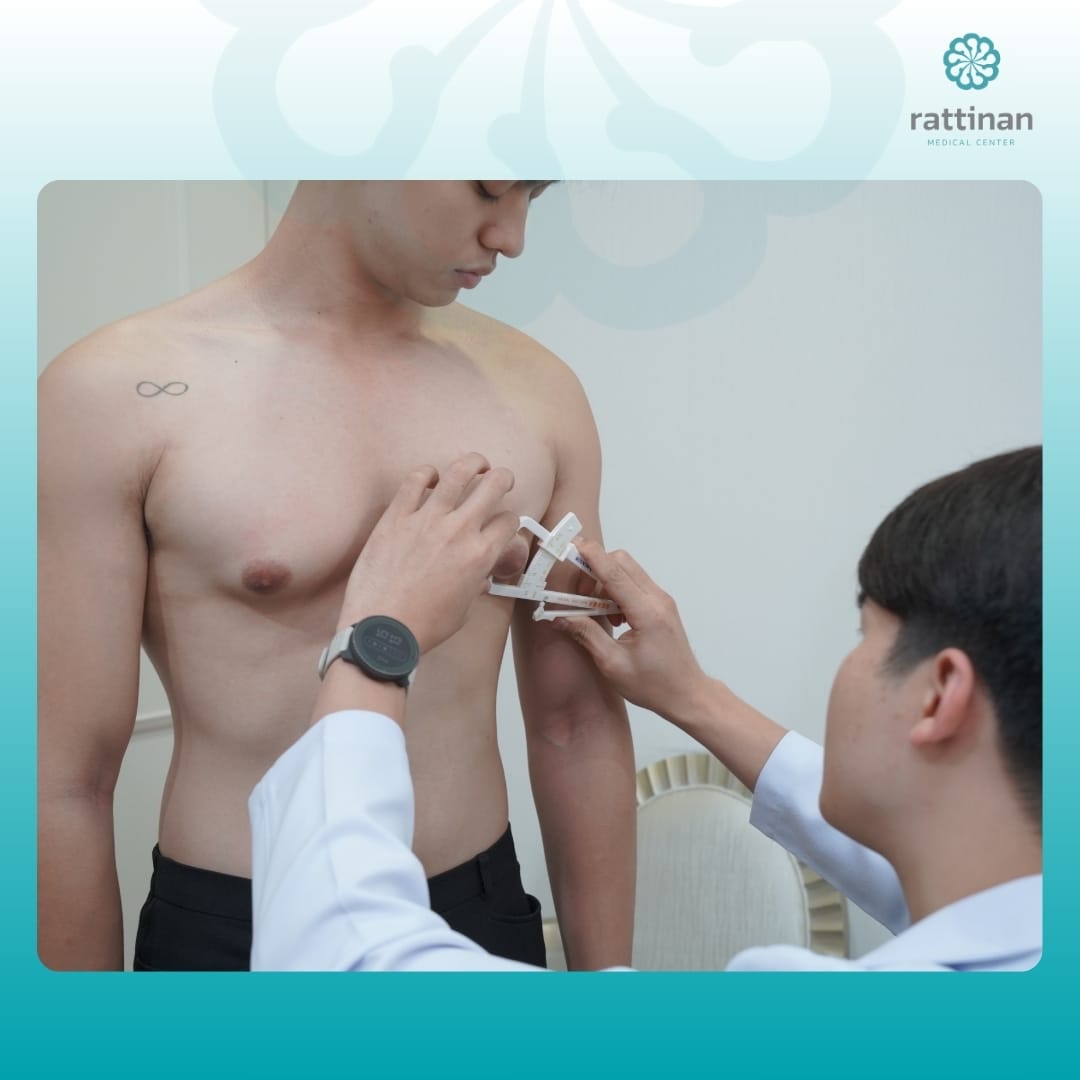
Pre-Surgery Preparation:
- Lab tests to assess your health
- Stop aspirin, NSAIDs, blood thinners, and certain supplements (like omega-3, gingko, green tea) 1 week before surgery
- No smoking or alcohol before surgery
- Avoid caffeine on surgery day (it can affect heart rate with anesthesia)
- Fast for 6–8 hours before the procedure
- Wear loose, comfortable clothing; you may have a drain and compression garment after surgery
Why choose Rattinan Clinic for Gynecomastia treatment?
- Have you tried losing weight and exercising, but your chest still remains pointed?
- Have you considered treatment but are worried about large scars or long recovery times?
- Do you want 100% reliable results without fear of the condition returning?
If you answered “yes” to these questions, Rattinan Clinic is the place you’ve been looking for.
Our Doctors

Dr. Suthipong Treeratana
M.D. – Founder & CEO

Dr. Jatuporn Suesat
Plastic and Reconstructive Surgeon

Dr. Taveechai Taveecharoenkool
Otolaryngologist

Dr. Aniwat Nillakarn
M.D.
Planning Your Visit
For international patients, Rattinan Clinic streamlines the medical tourism experience, providing comprehensive support from the initial consultation to recovery. Our services include help with travel, accommodation, and a detailed treatment plan for a hassle-free journey. A dedicated Beauty Consultant will ensure personalized care throughout your stay.
Frequently Asked Questions <<< New section
How Much Does Gynecomastia Treatment Cost?
Procedure Starting Price (THB) Gynecomastia Surgery 120,000 Gynecomastia Surgery with General Anesthesia 150,000
Is Gynecomastia Treatment Safe?
Is Gynecomastia Treatment Safe?
Gynecomastia surgery is generally safe and effective when performed by qualified, board-certified plastic surgeons in accredited facilities, though like any surgery it carries risks that can be minimized through proper preparation and post-operative care.
Surgical risks include blood clots, excessive bleeding, infection, hemorrhage, wound healing disorders, bruising, permanent scarring (fades but never disappears completely), asymmetry in breast size/shape, temporary or long-term loss of sensation/numbness (can last up to a year), persistent pain, rare anesthesia complications (seek immediate help for shortness of breath, chest pain, heart palpitations), and possible reoperation to correct problems or achieve desired results. Risk factors that increase complications include BMI ≥25 kg/m² (significant prognostic risk factor), smoking/tobacco use (delays healing through vasoconstriction impairing tissue formation—must quit pre-surgery), and certain surgical techniques (periareolar incision has higher complication rates than inframammary fold approach).
At Rattinan Clinic, we ensure safety through:
(1) comprehensive pre-operative consultation including medical history review, blood tests (CBC), male breast cancer screening, and medication adjustments (stopping blood thinners/aspirin/supplements that increase bleeding);
(2) board-certified surgeons with specialized plastic surgery training, hospital privileges, and AACI-accredited facilities;
(3) meticulous post-operative protocols including pain/swelling/infection medications, compression garments for 4-6 weeks, early walking to prevent blood clots, avoiding alcohol (3 weeks) and smoking, avoiding heavy lifting/strenuous chest movements (4-6 weeks), and immediate medical attention for infection signs (fever >100.4°F, severe pain, increased redness, foul-smelling drainage).
Will Gynecomastia Treatment Hurt?
Will Gynecomastia Treatment Hurt?
You will not feel pain during surgery because you’ll be under general anesthesia (asleep throughout the procedure), but expect soreness and discomfort afterward that’s effectively managed with medication and diminishes quickly.
Post-operative pain is typically minimal to moderate with the first few days being the sorest, then generally improving within about a week—many patients feel “pretty normal” and can perform daily activities pain-free by the end of week two.
Pain management includes prescribed medications to relieve pain, reduce swelling, and prevent infection, with some patients needing only over-the-counter Tylenol while others require prescription pain medication; some surgeons use long-acting local anesthetic (Exparel) providing numbness lasting up to 5 days for enhanced comfort.
Sensory changes are common: expect temporary loss of sensation, numbness, or decreased sensitivity in the breast area that may last up to a year (most patients don’t consider this a major concern compared to aesthetic results), plus possible temporary burning sensations.
Warning signs: while short-term pain is normal, contact your provider immediately if you experience severe or increased pain not relieved by medication, as persistent pain that doesn’t resolve is a potential complication.
At Rattinan Clinic, we prioritize your comfort through comprehensive pain management protocols, appropriate anesthesia, effective post-operative medications, and close monitoring to ensure smooth recovery with minimal discomfort.


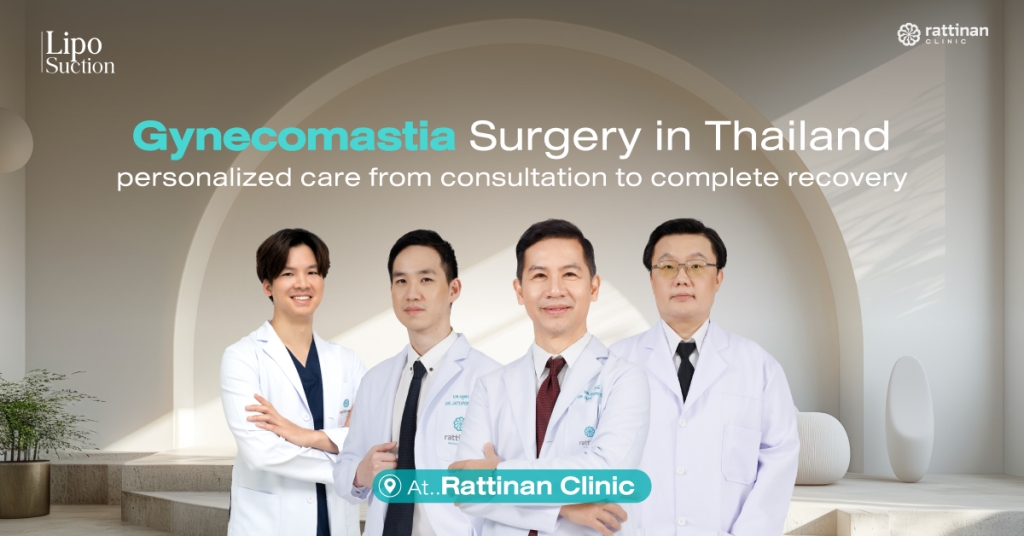
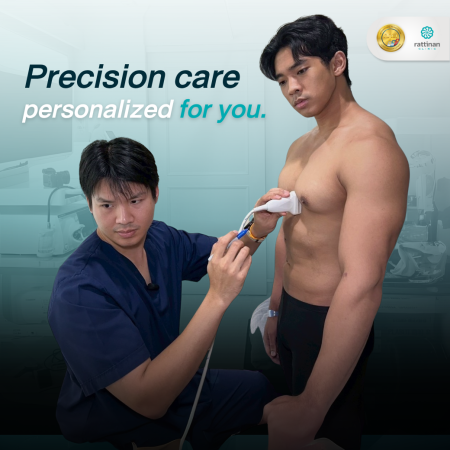

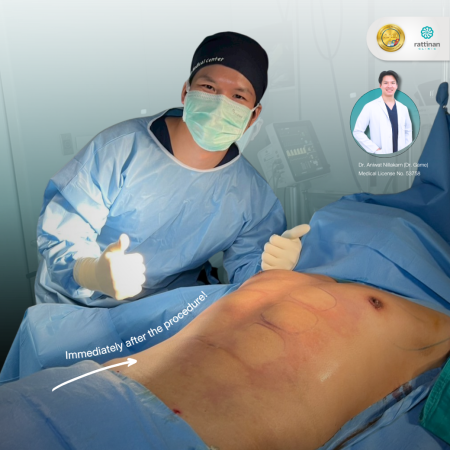


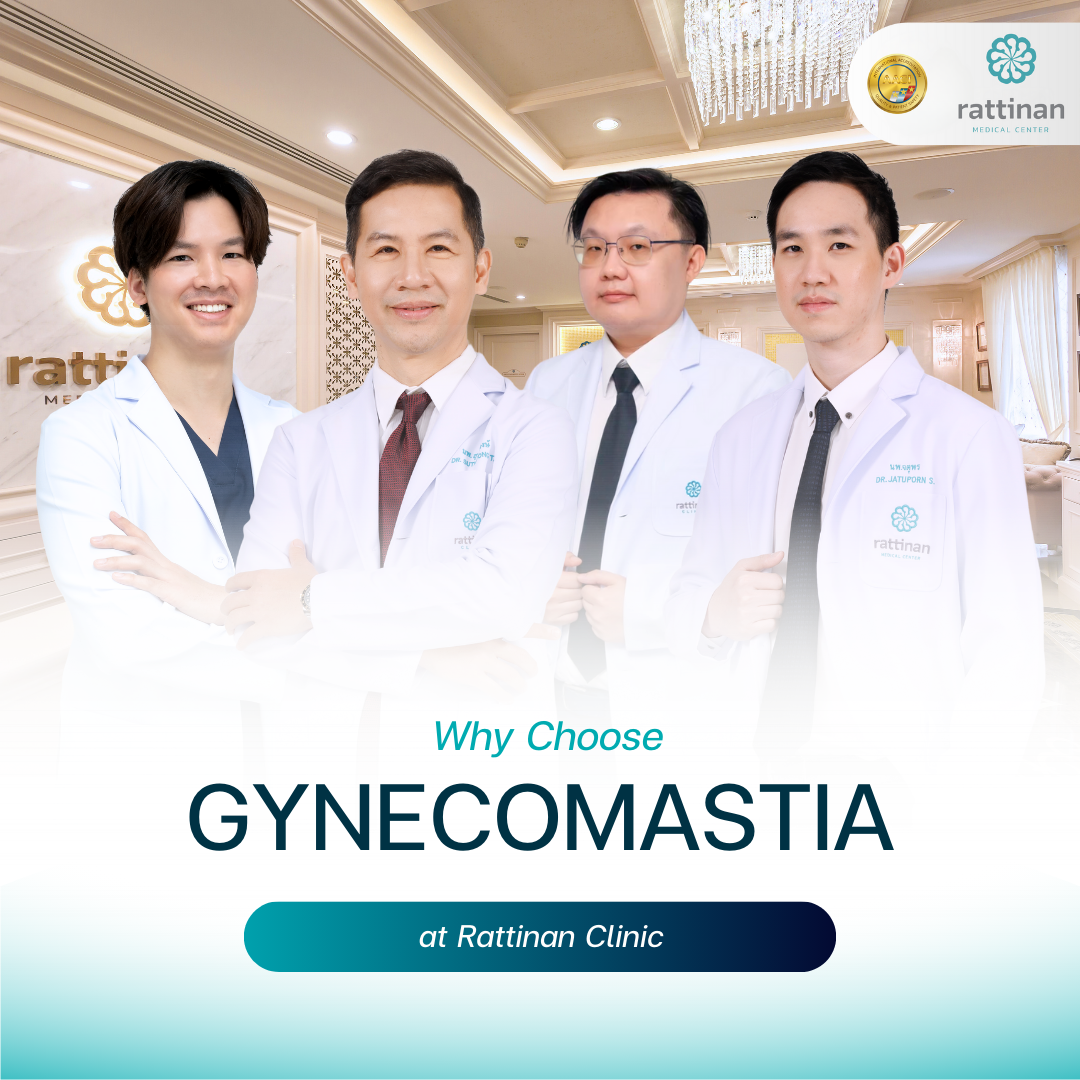
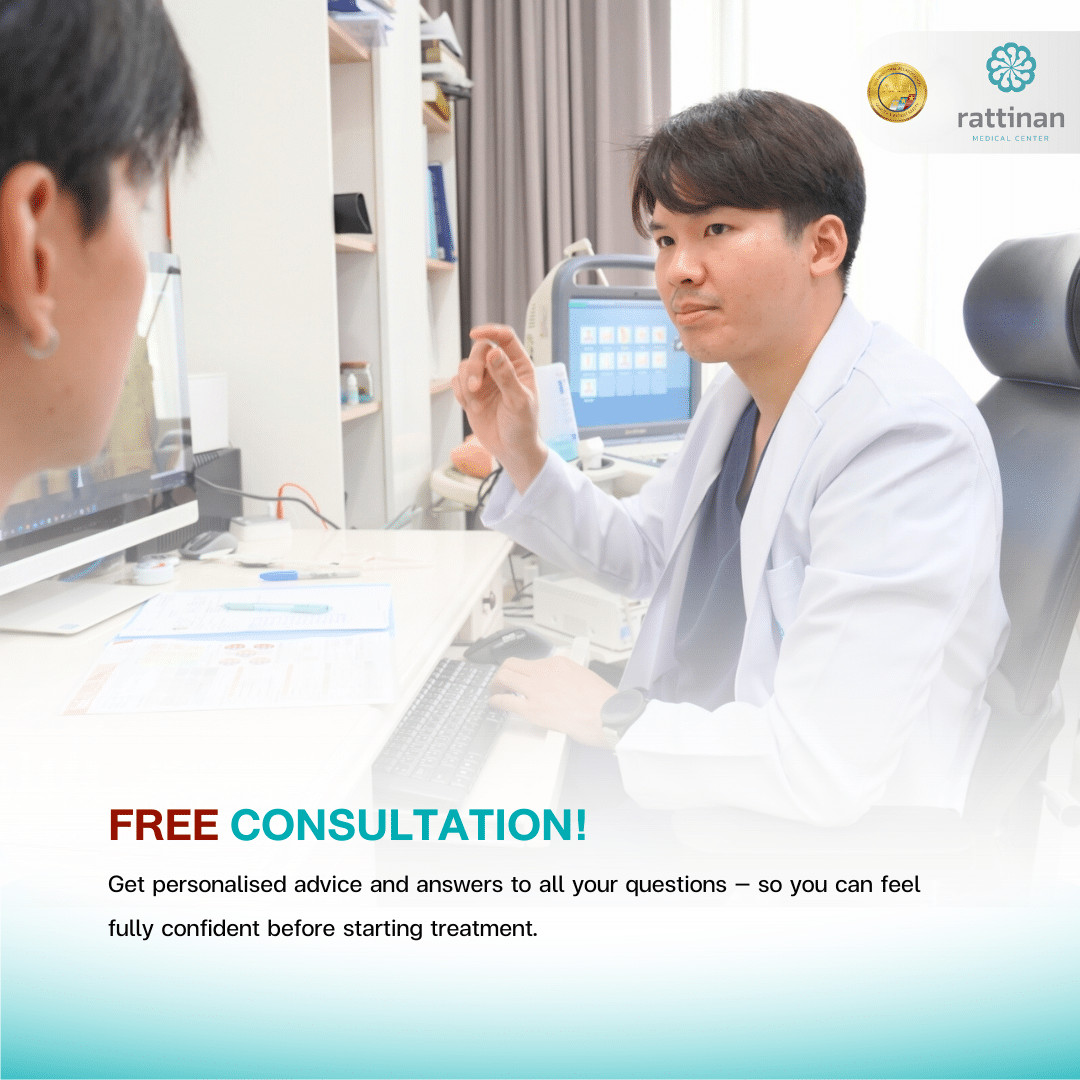
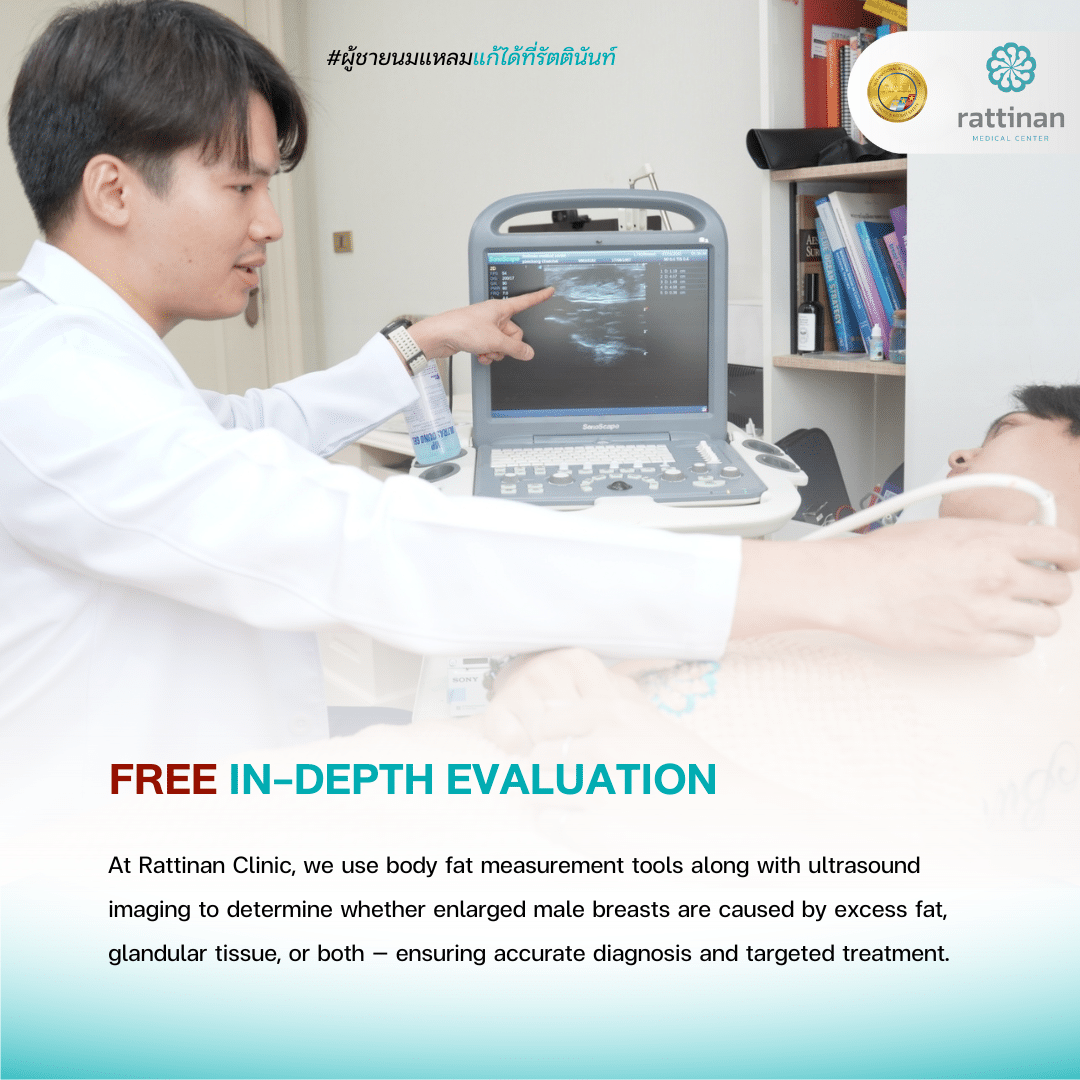
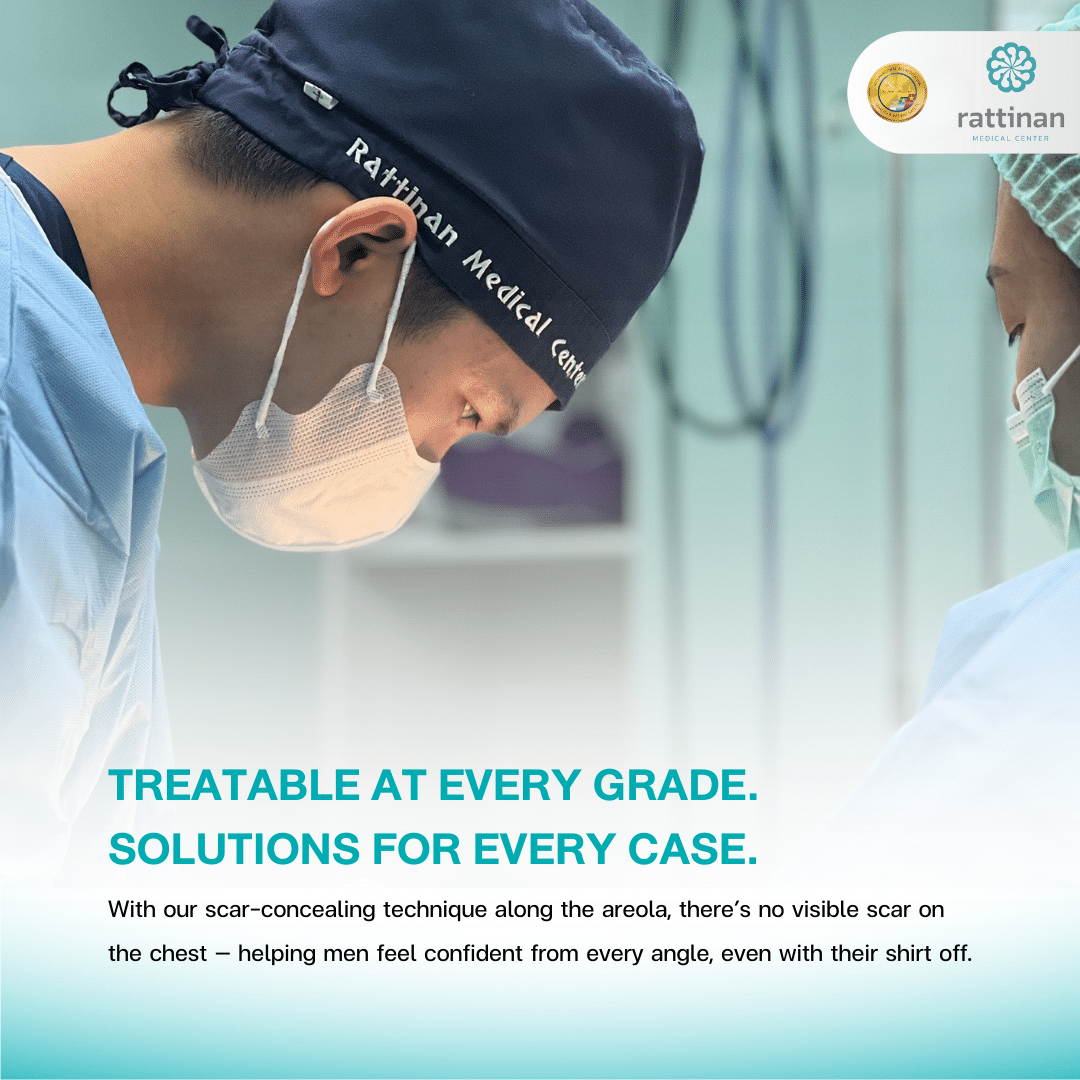
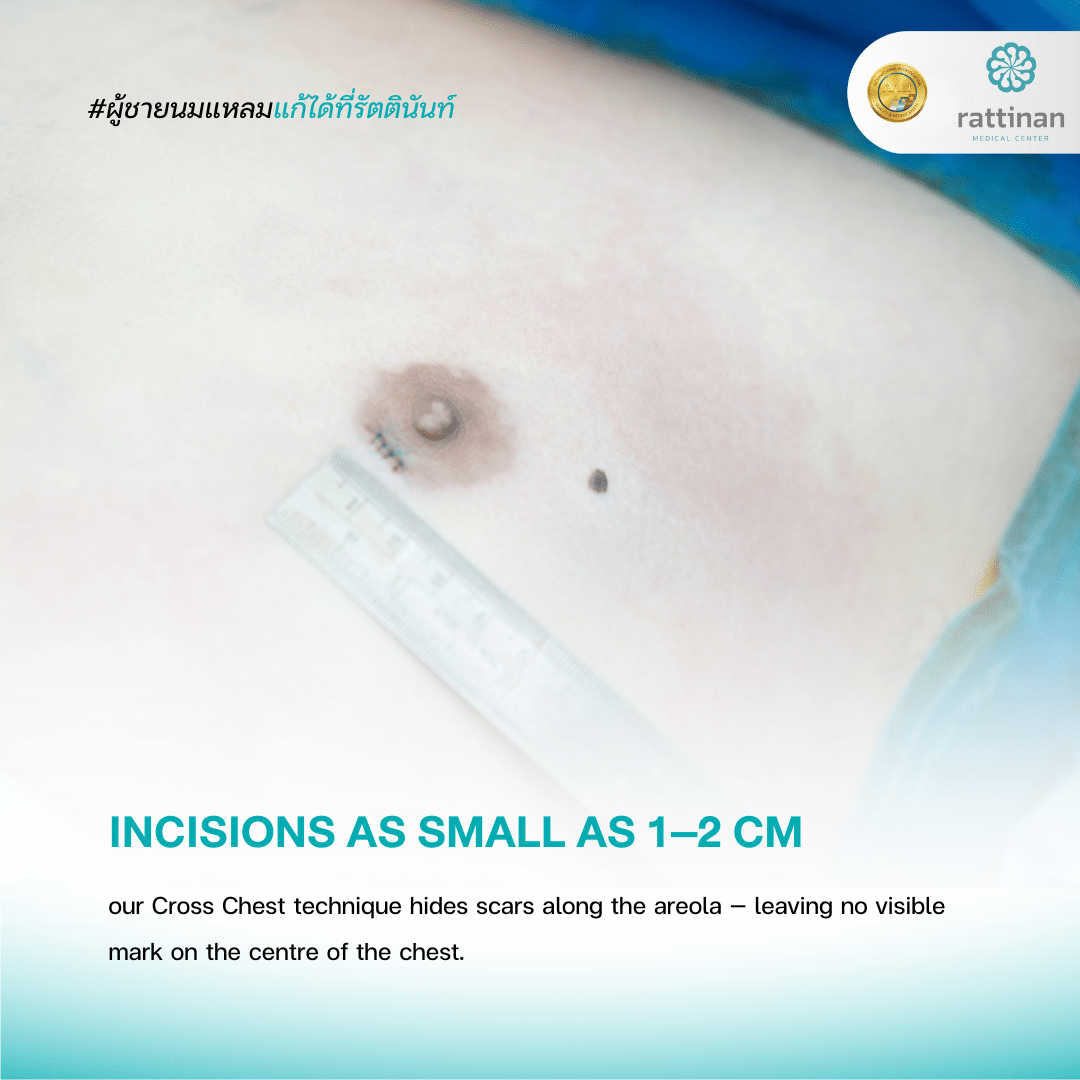
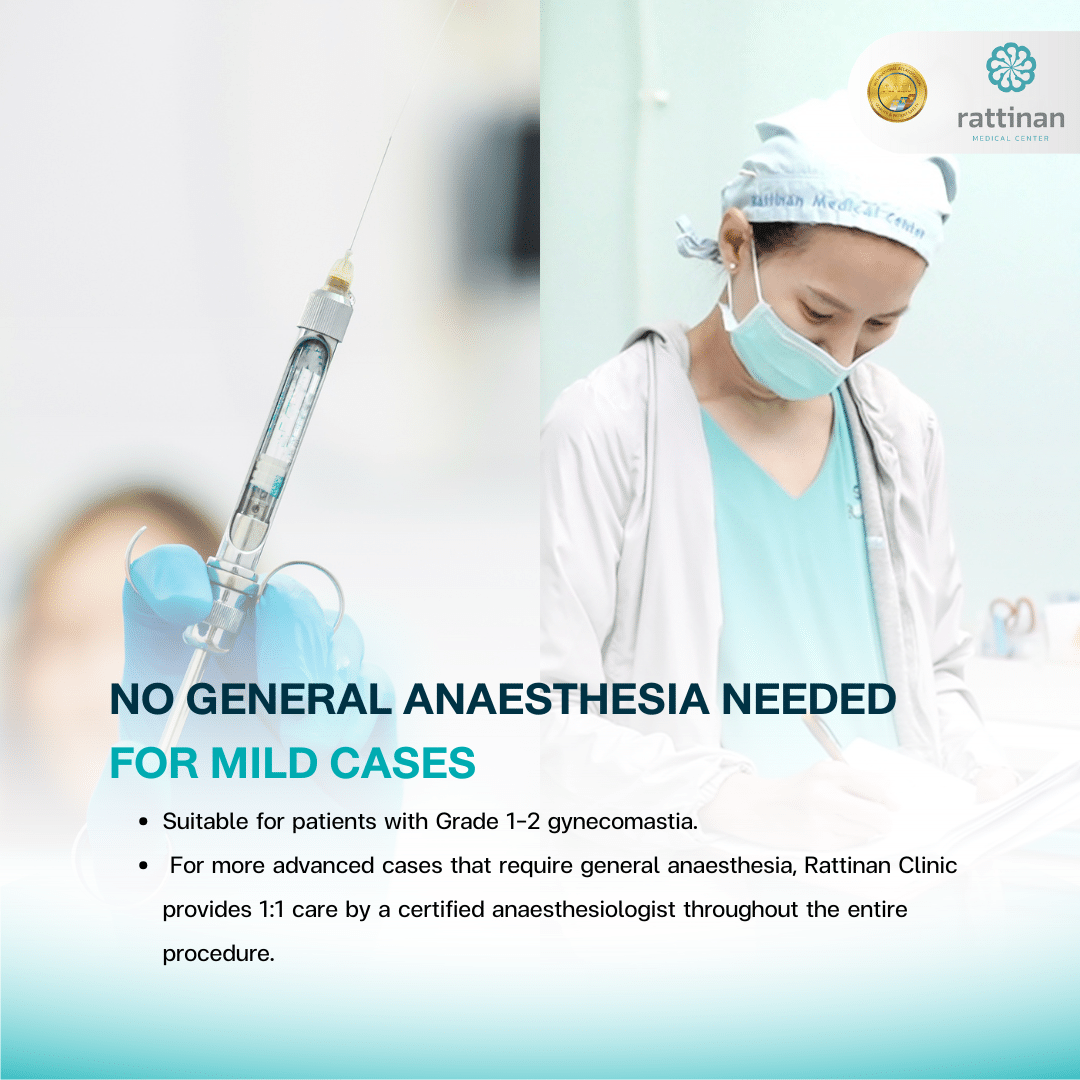
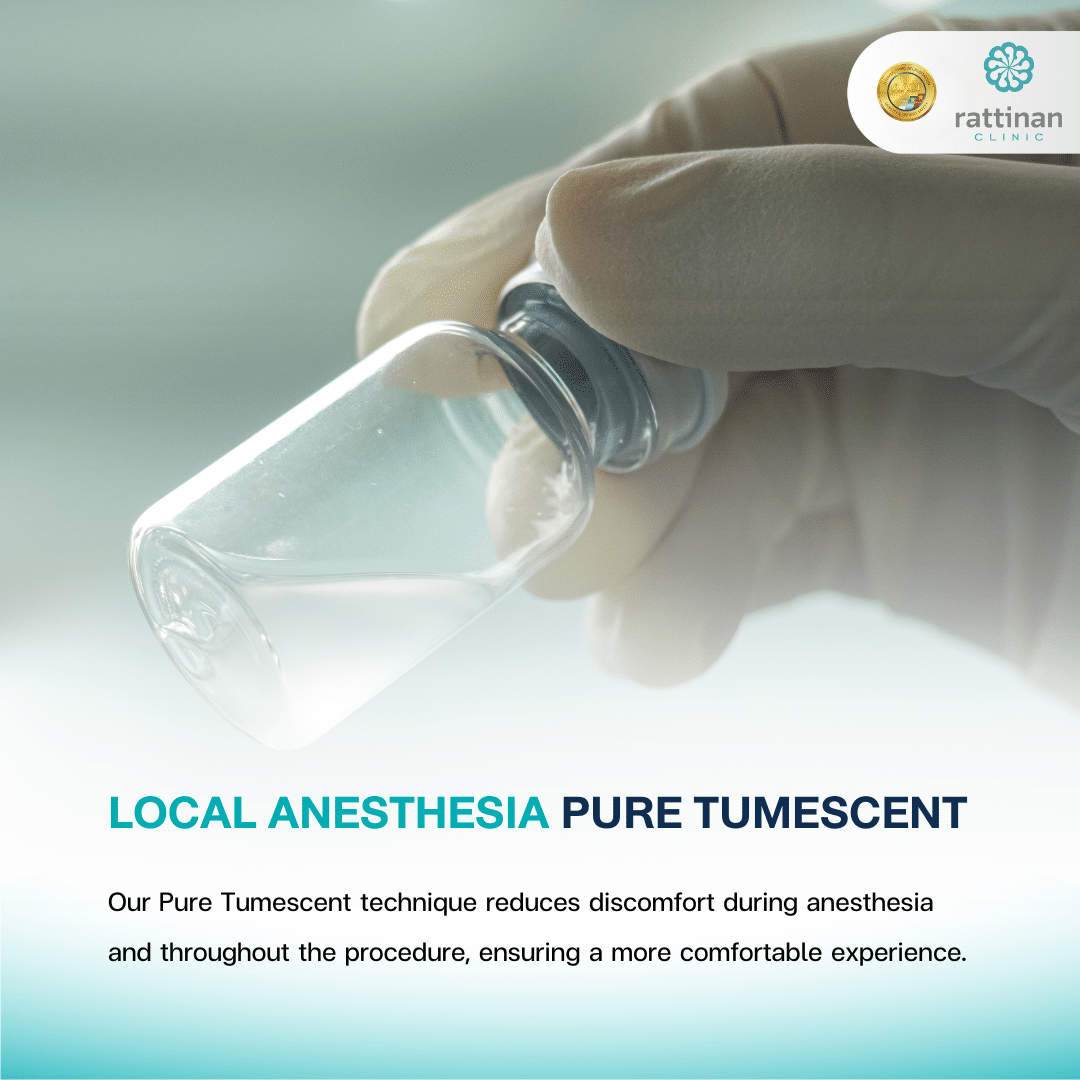
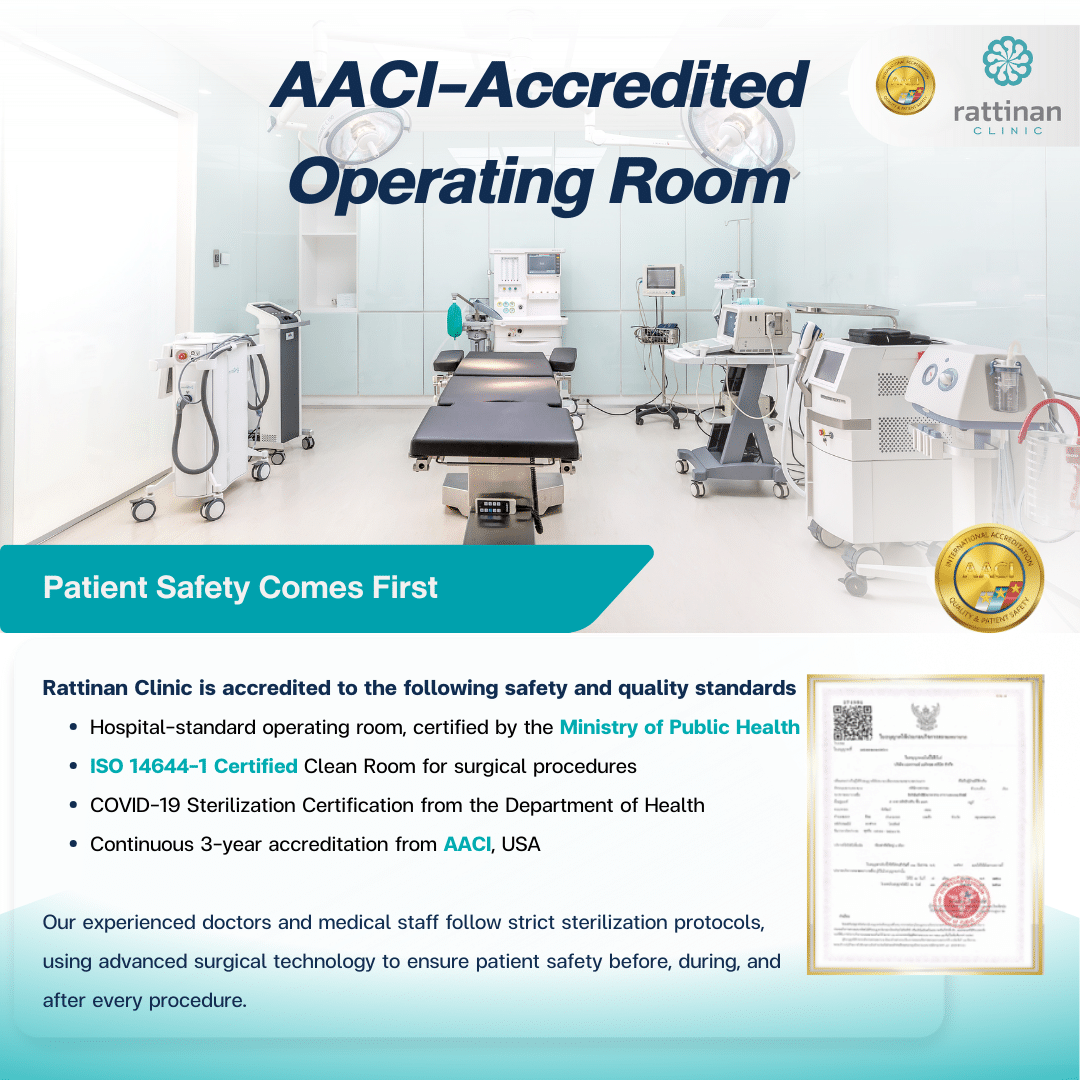
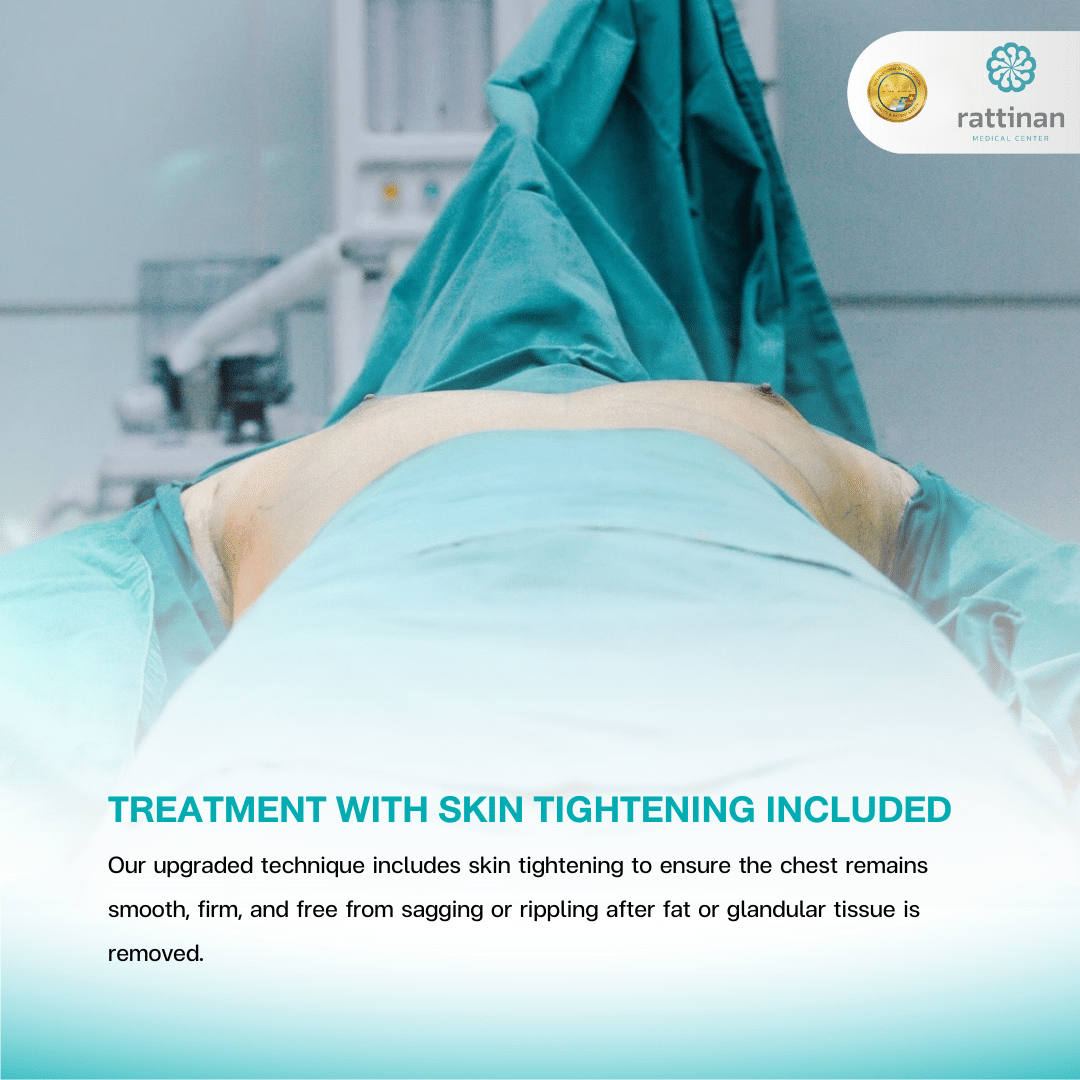
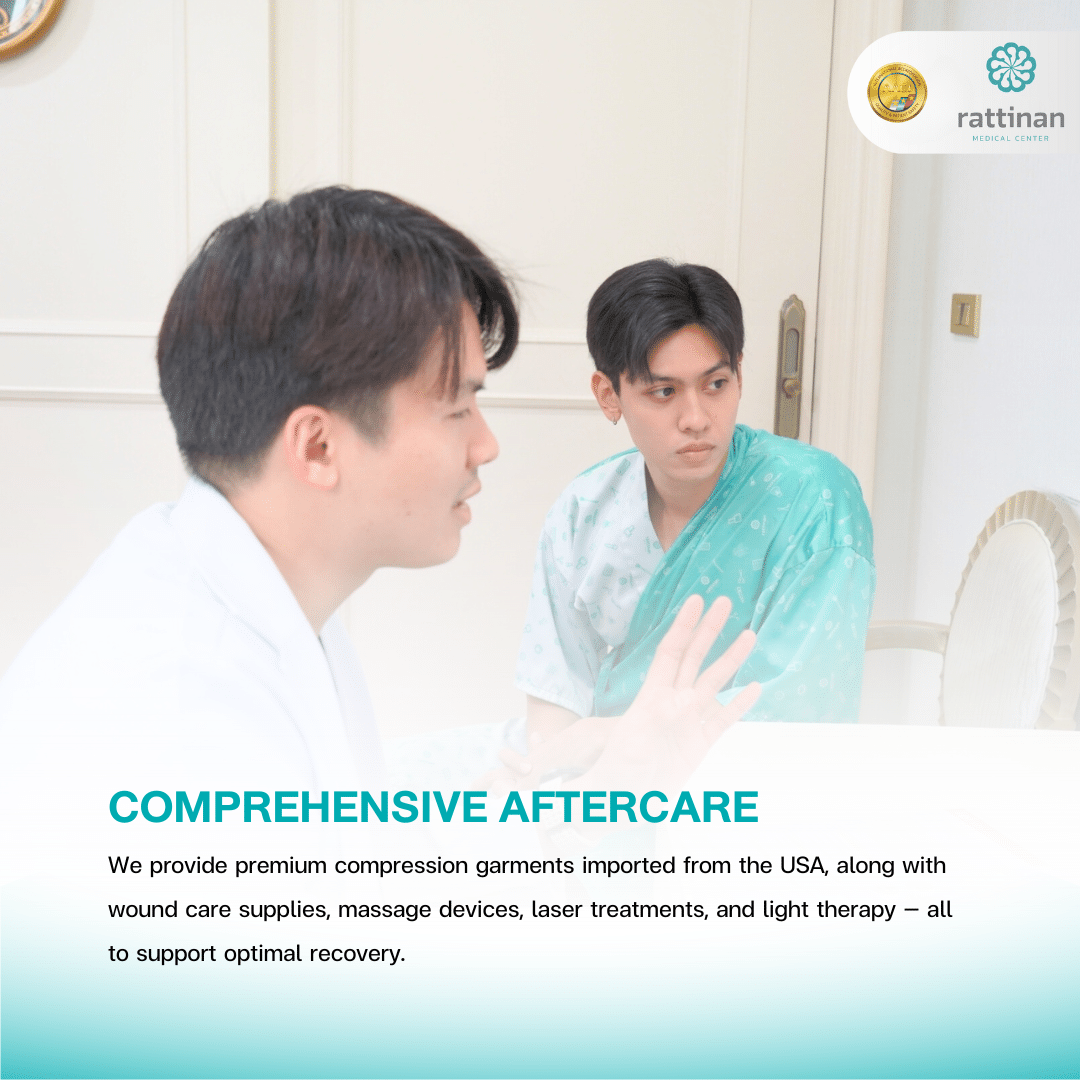
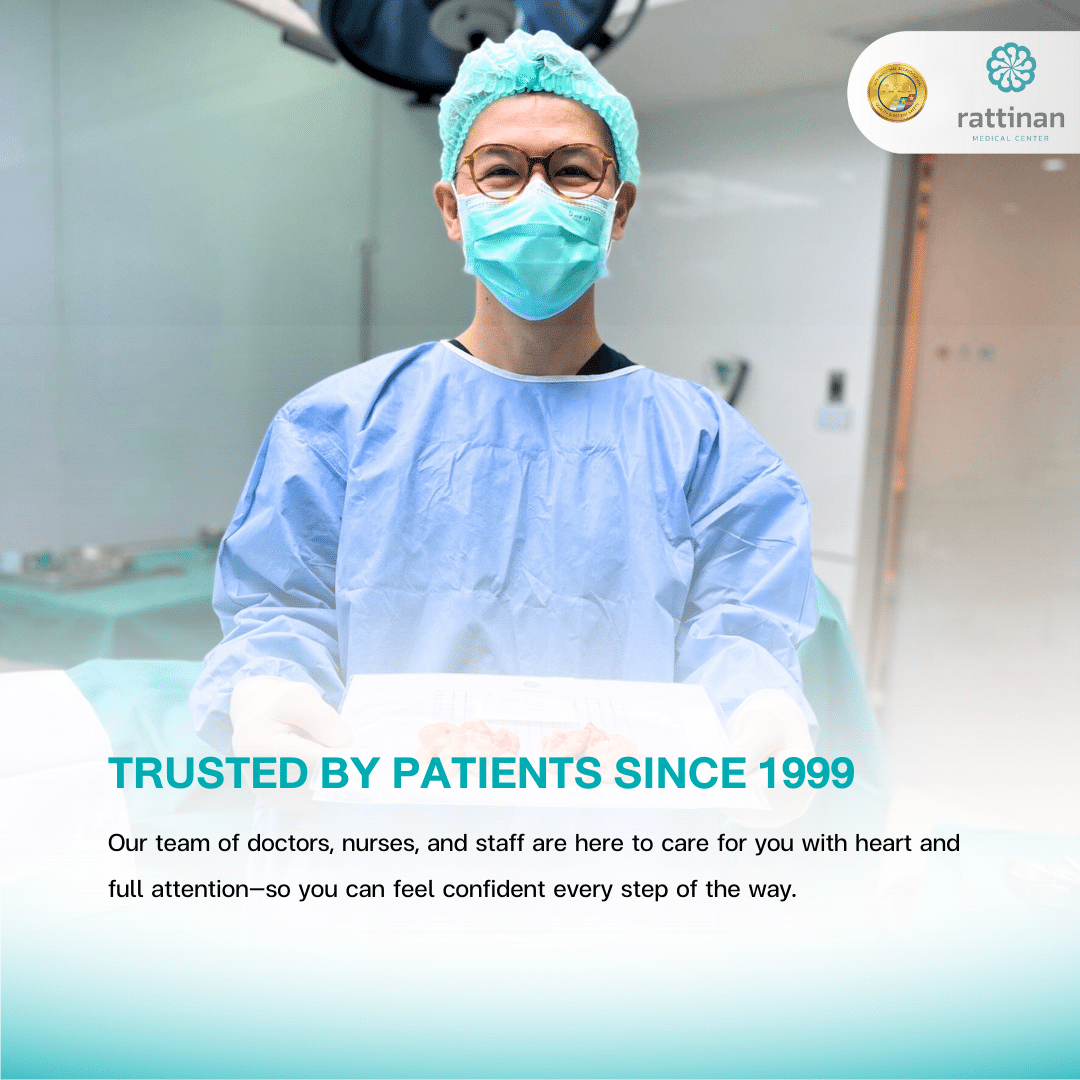
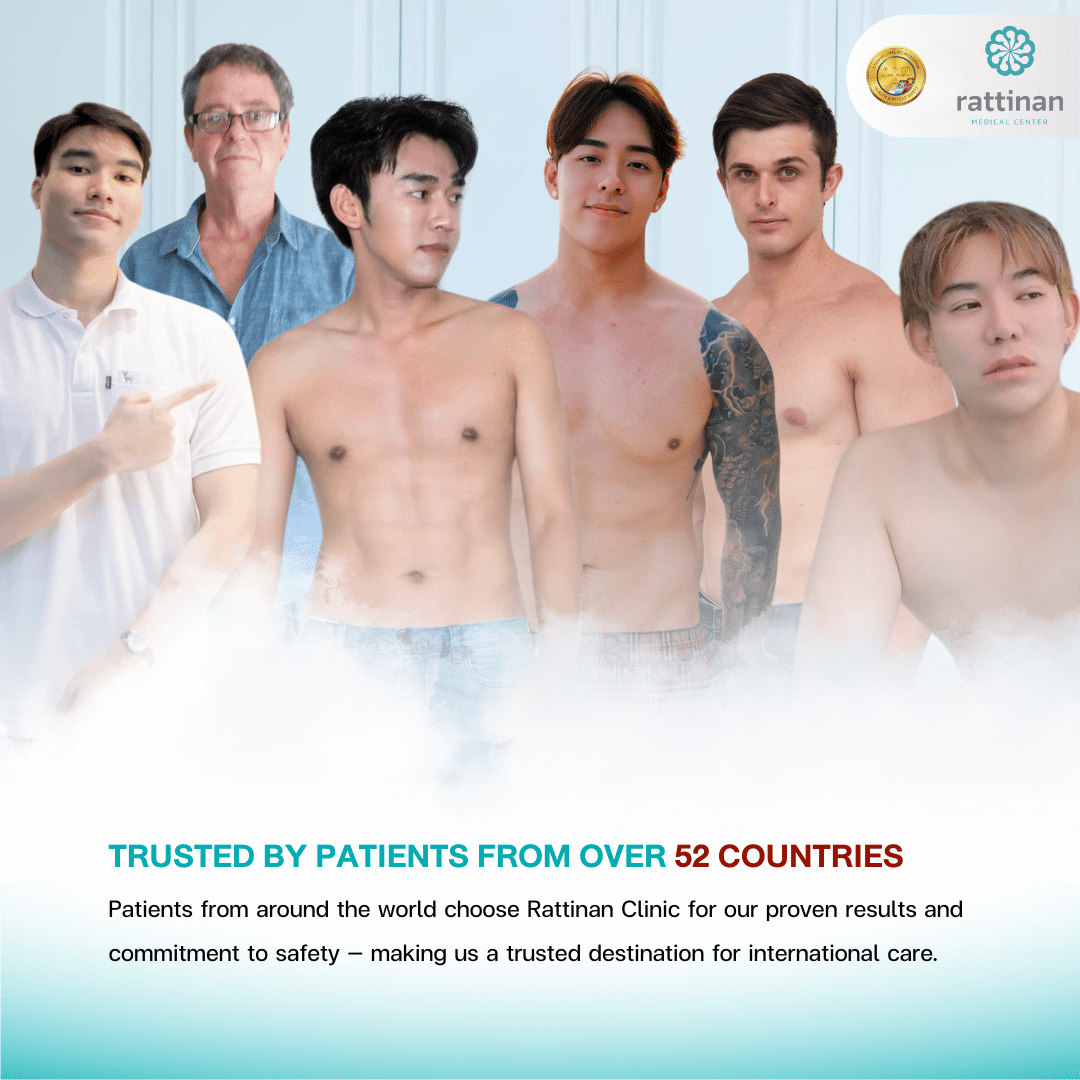

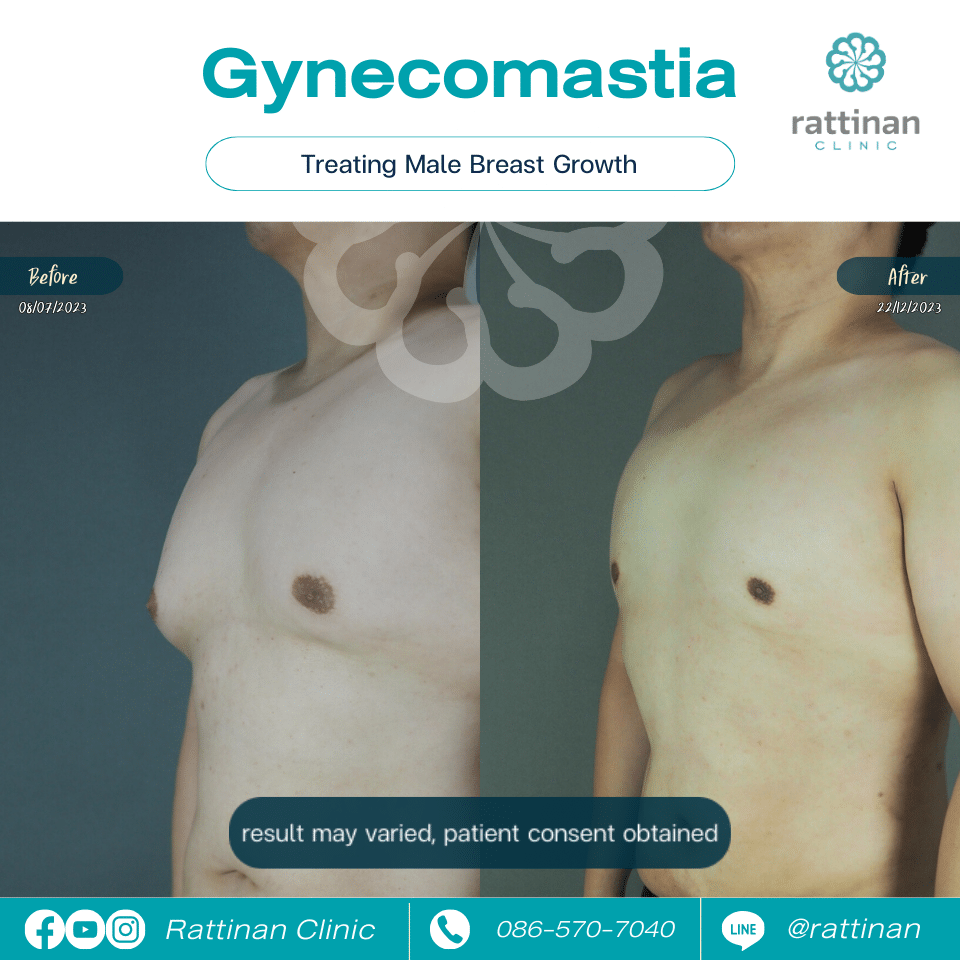



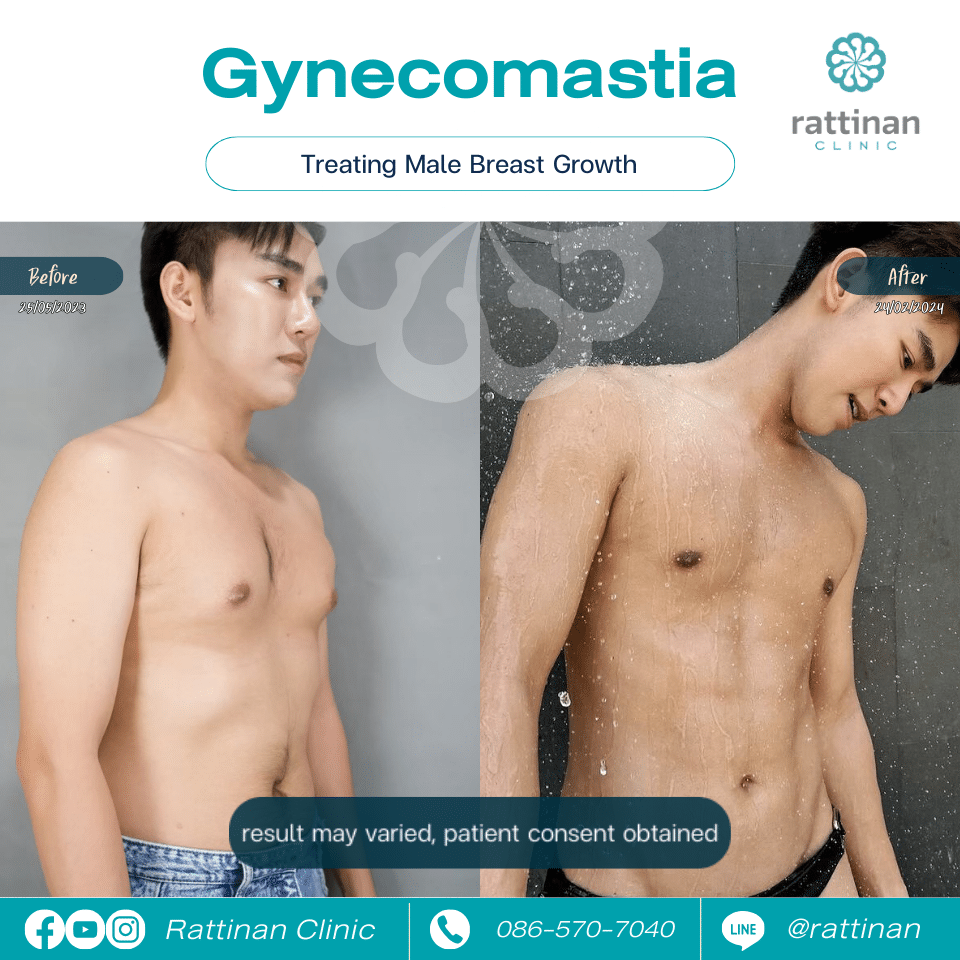
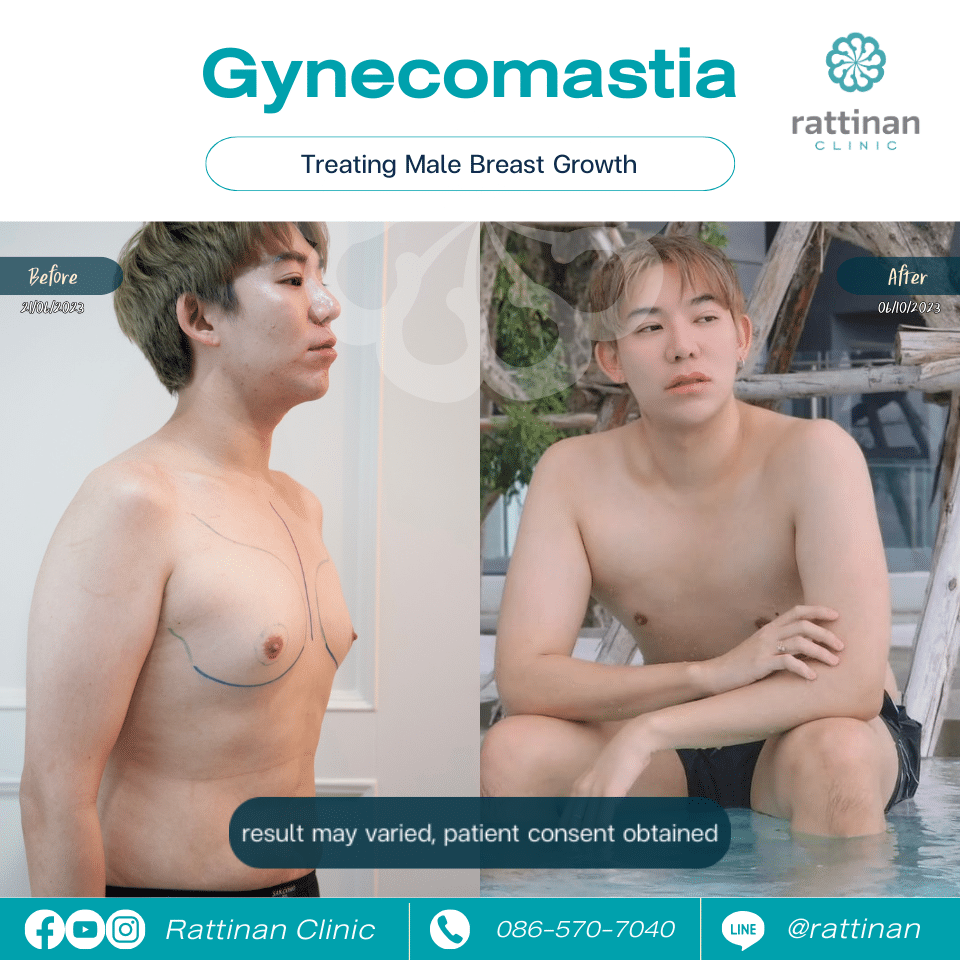
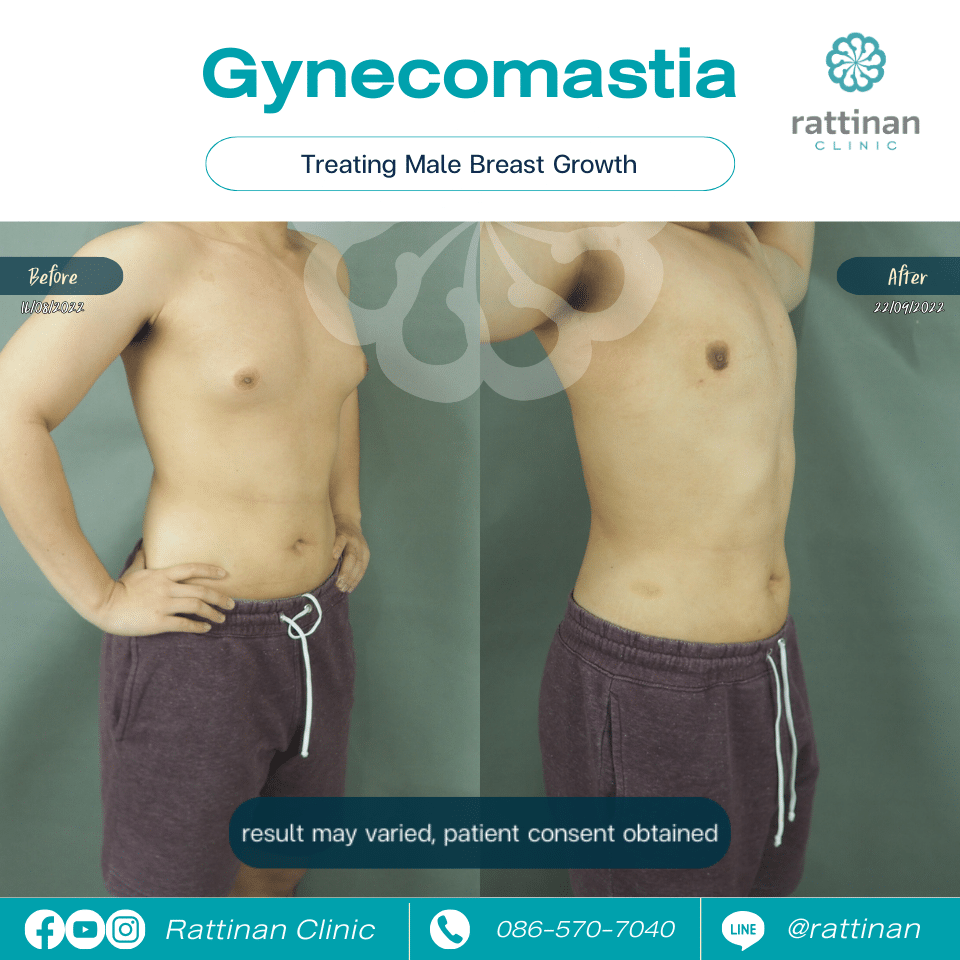
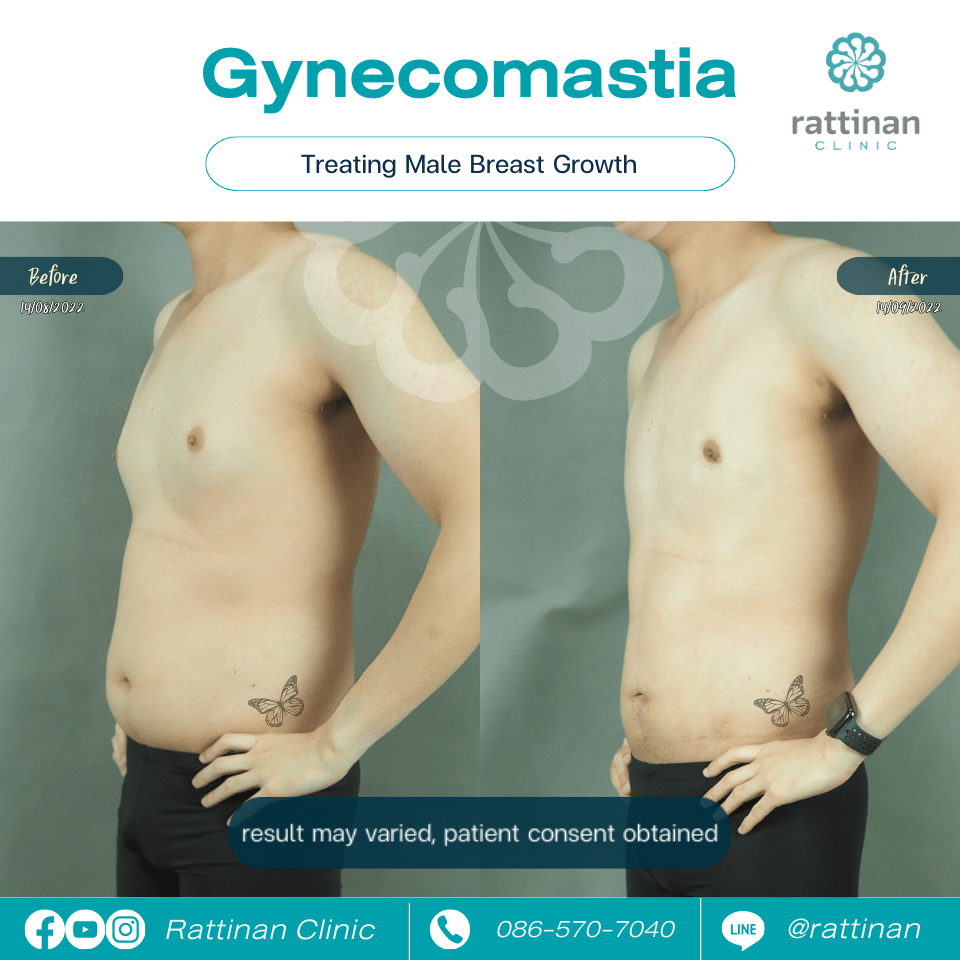

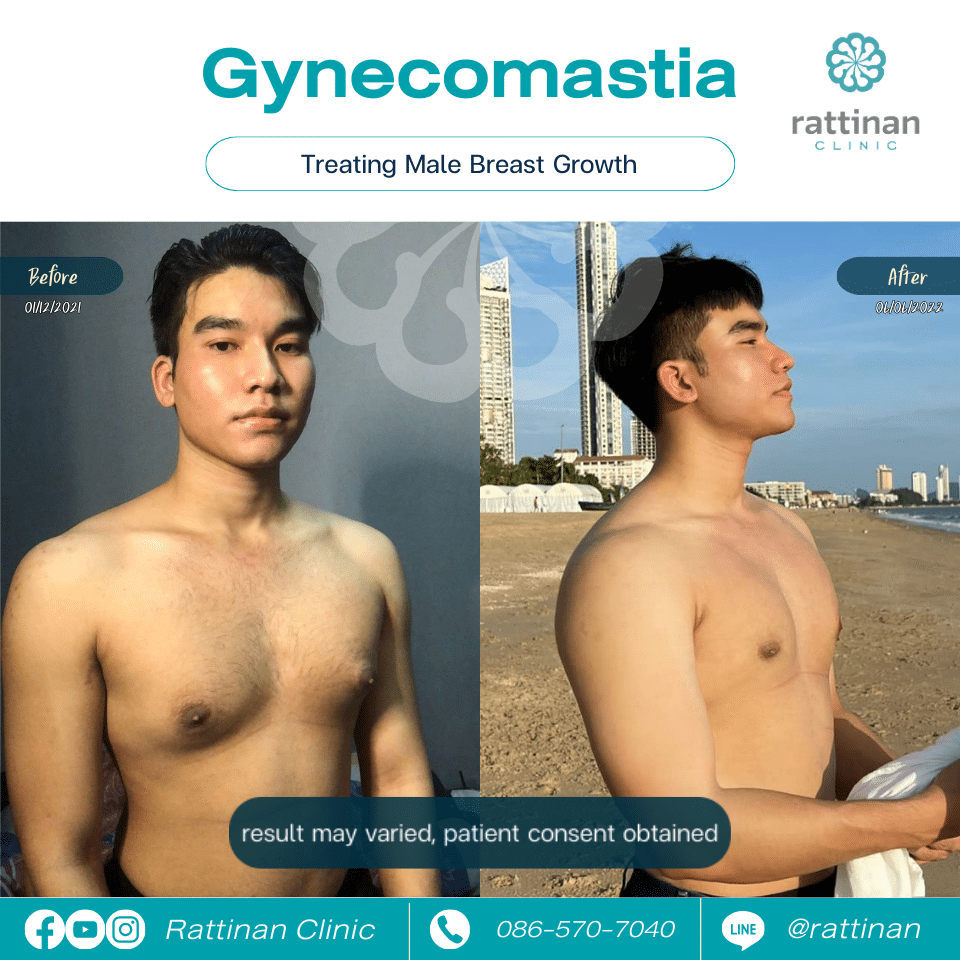
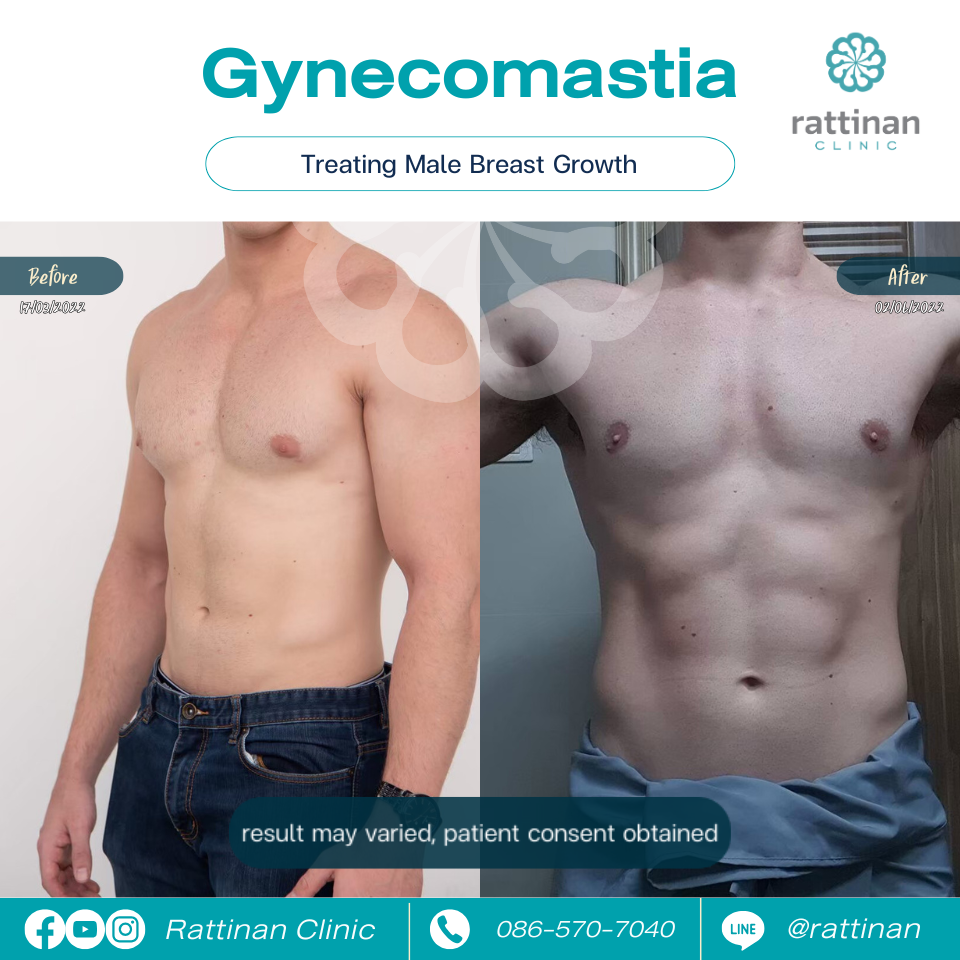
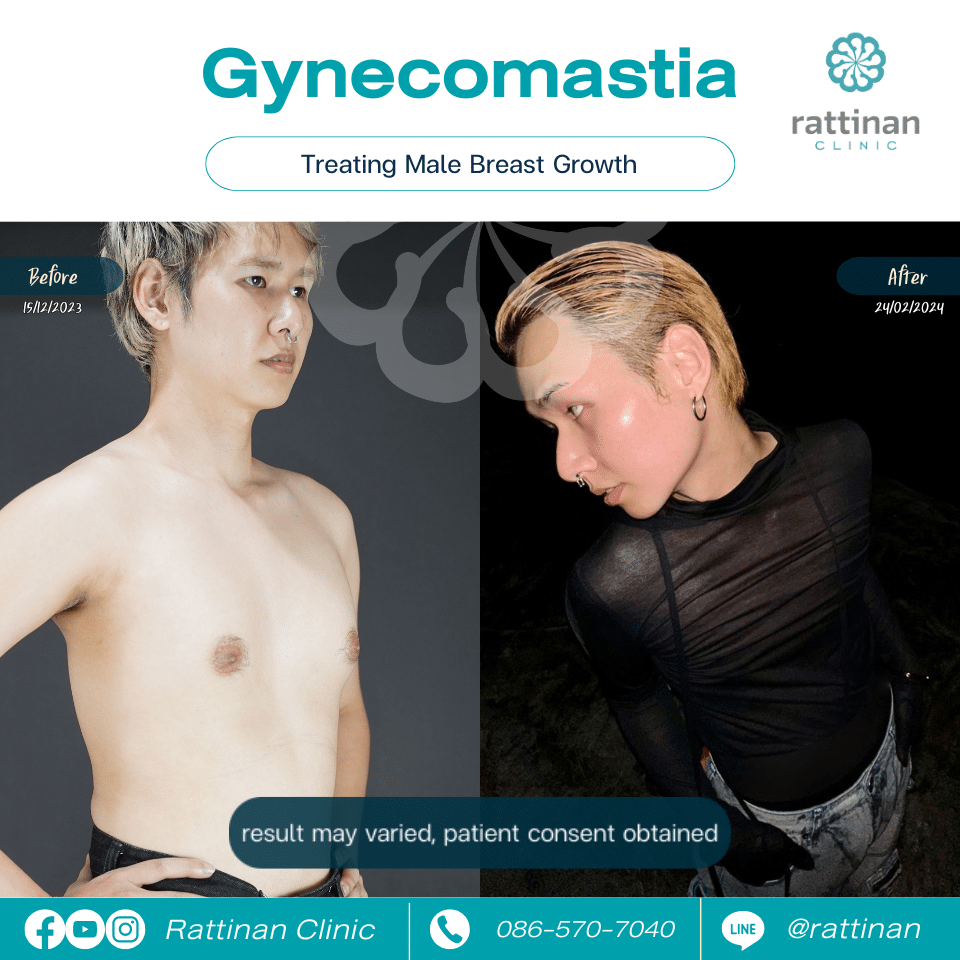
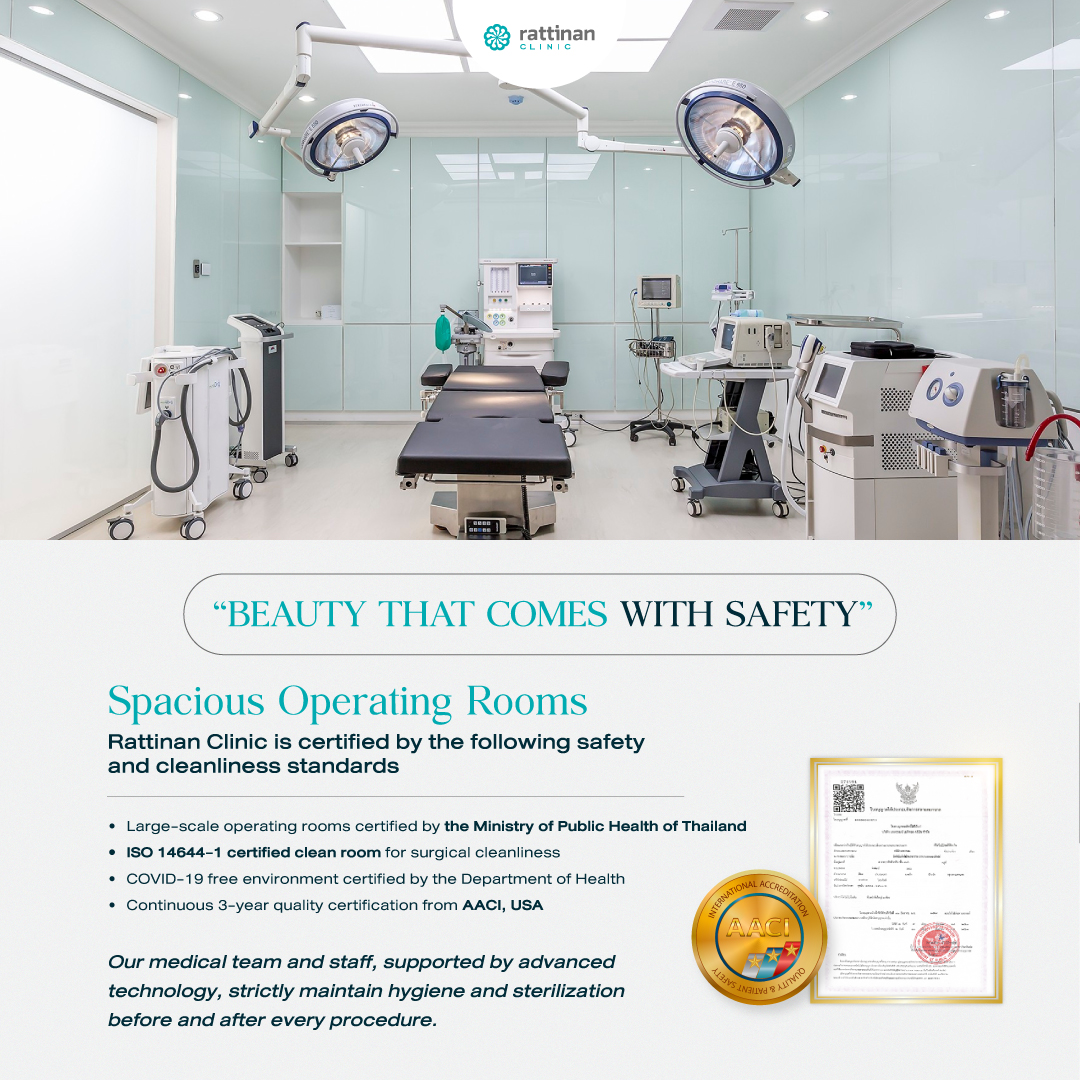



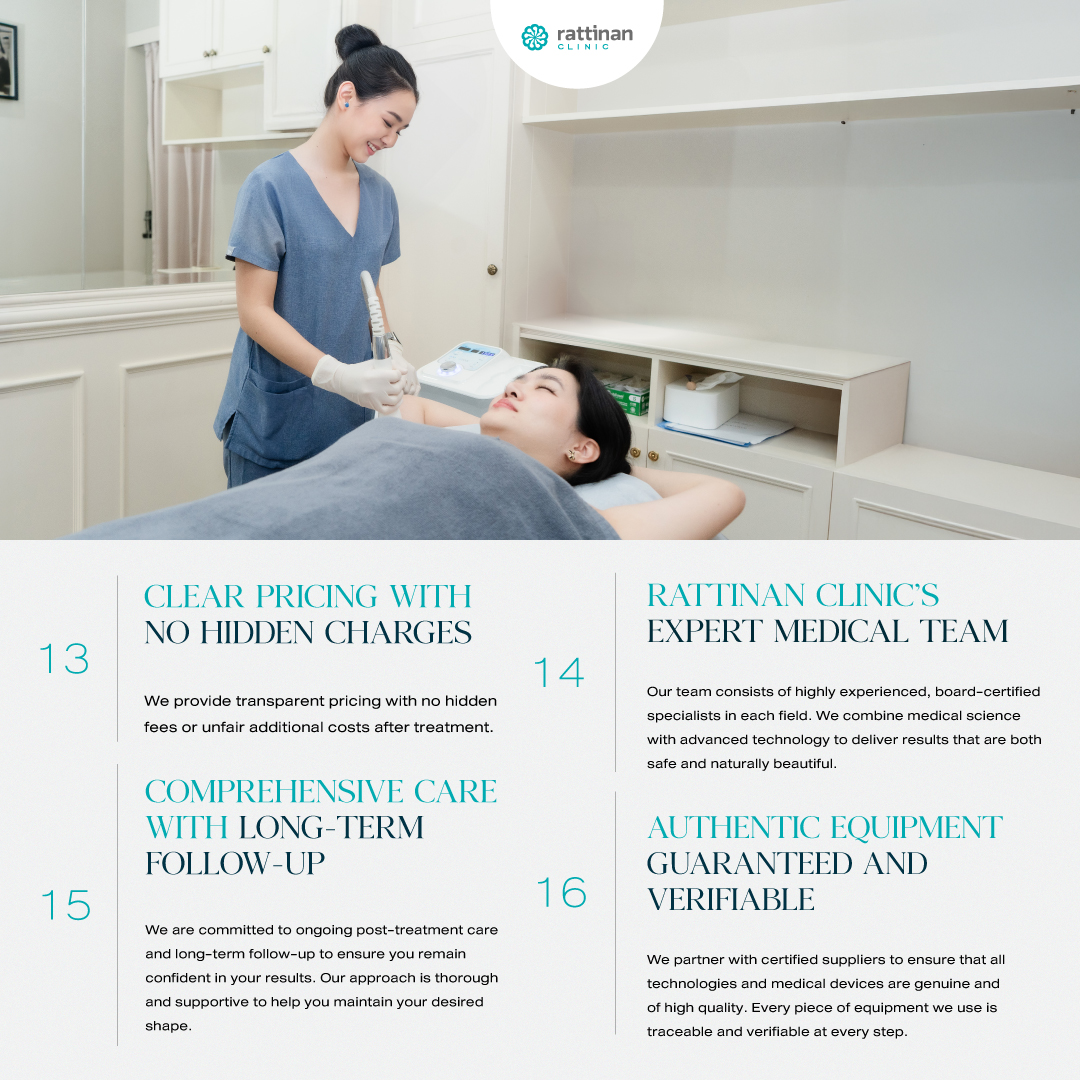
Dr. Suthipong Treeratana (Dr. Nueng) specializes in liposuction and body contouring surgery, focusing on personalized treatment plans to help you feel more confident in yourself.